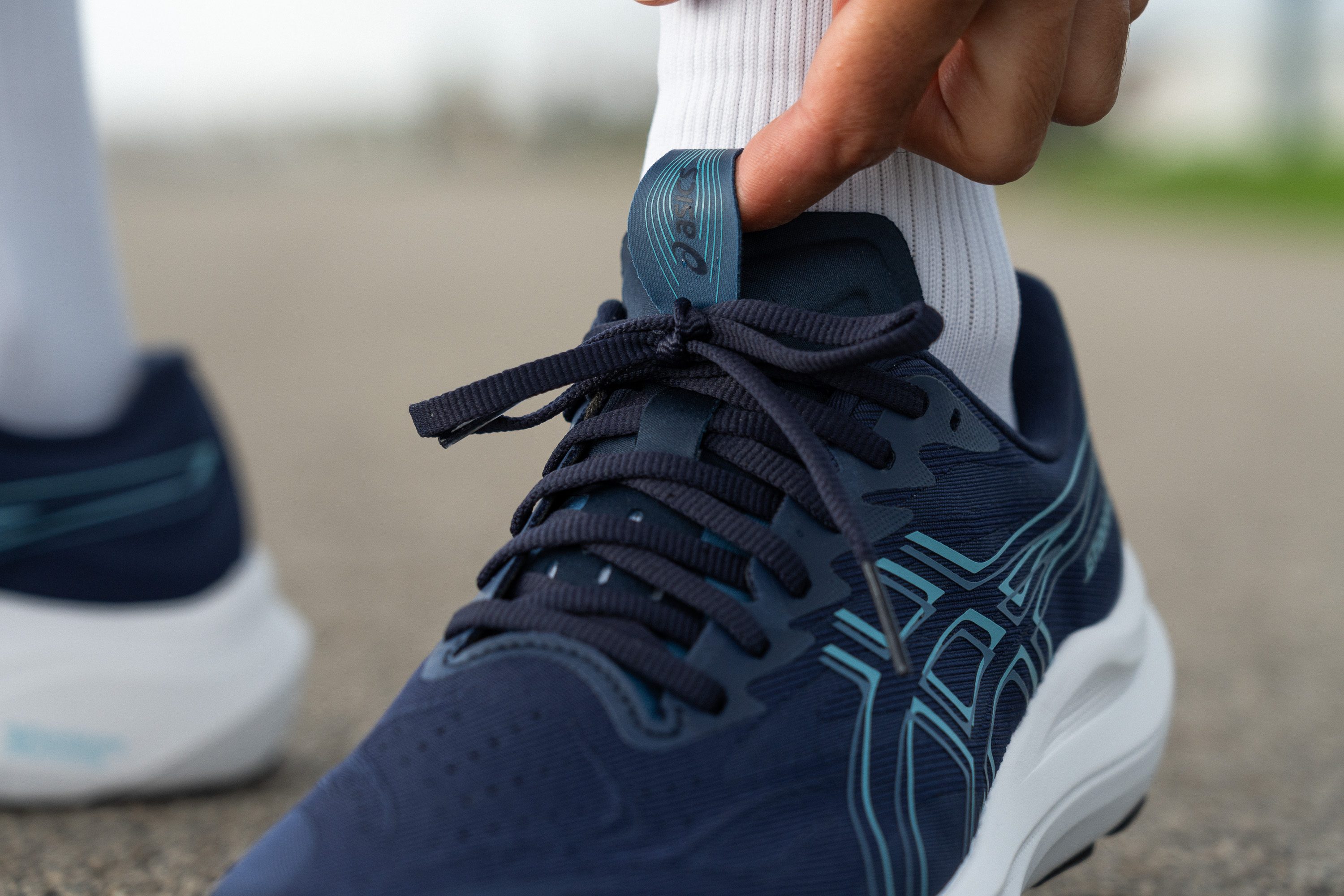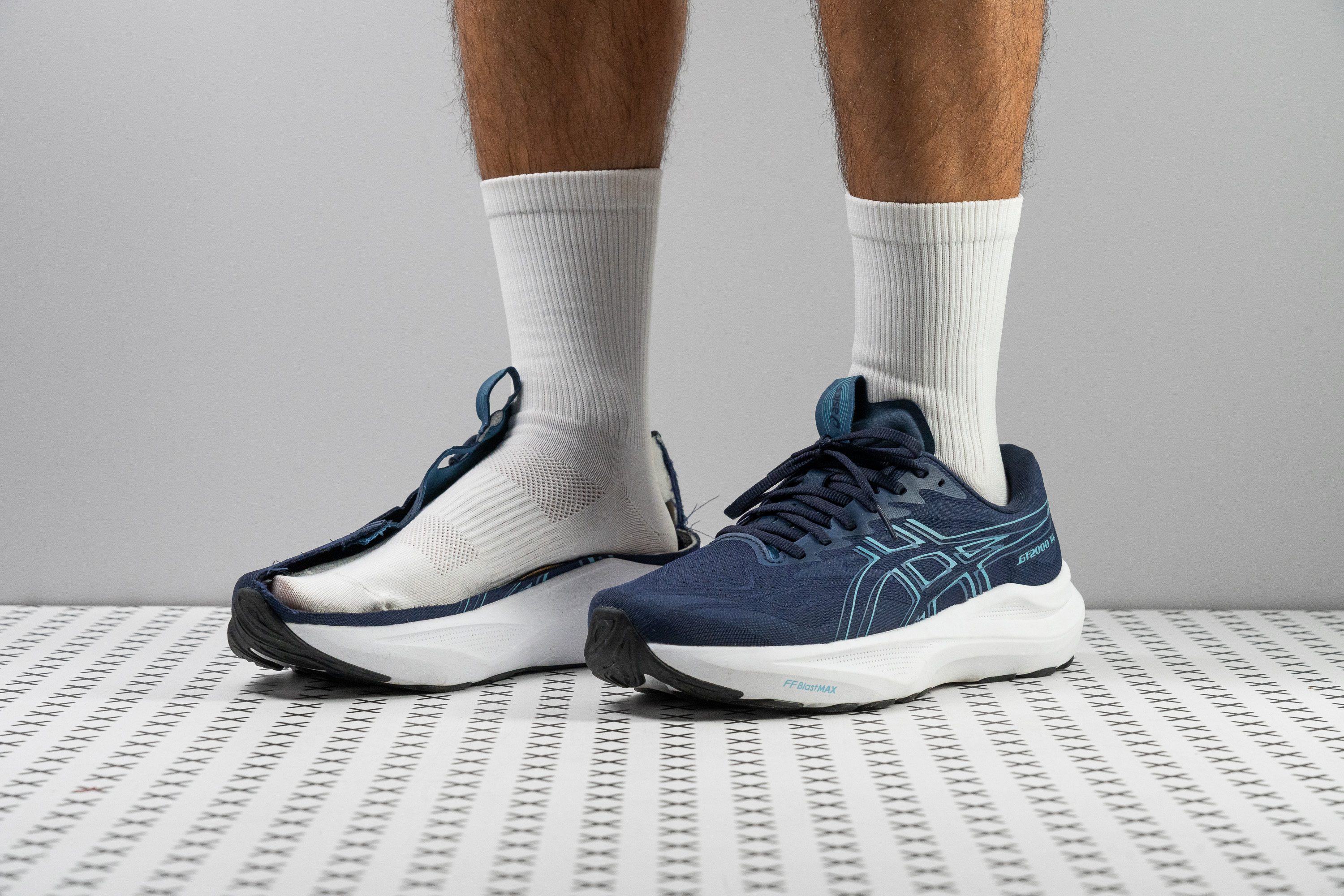Our verdict
- Top pick in best ASICS walking shoes
Pros
- Improved FF Blast Max foam
- Outstanding outsole durability
- Stable design without feeling intrusive
- Reasonable weight
- Same price maintained despite upgrades
- Well-crafted, supportive upper
- New outsole design improves flexibility
- Dependable traction
- Dependable traction
Cons
- Limited breathability
- Tapered toebox may feel restrictive
- Still lacks a truly energetic ride
- PureGEL doesn't add much value
Audience verdict
- Top 1% in ASICS Gt 2000 running shoes
- Top 18% most popular running shoes
Comparison
The most similar running shoes compared
+ + Add a shoe | |||||
|---|---|---|---|---|---|
| Audience score | 82 Good! | 85 Good! | 80 Good! | N/A | |
| Price | £140 | £140 | £115 | £170 | |
| Pace | Daily running | Daily running | Daily running | Daily running | |
| Shock absorption | High | Moderate | Moderate | Moderate | |
| Energy return | Moderate | Moderate | Low | High | |
| Traction | High | High | High | High | |
| Arch support | Stability | Stability | Stability | Stability | |
| Weight lab Weight brand | 9.5 oz / 269g 9.4 oz / 266g | 10.4 oz / 295g 10.5 oz / 298g | 9.6 oz / 272g 9.3 oz / 265g | 9.3 oz / 264g 9.5 oz / 269g | |
| Drop lab Drop brand | 8.7 mm 8.0 mm | 9.3 mm 8.0 mm | 9.6 mm 8.0 mm | 10.1 mm 8.0 mm | |
| Strike pattern | HeelMid/forefoot | HeelMid/forefoot | HeelMid/forefoot | Heel | |
| Size | True to size | Slightly small | Slightly small | - | |
| Midsole softness | Soft | Soft | Soft | Soft | |
| Difference in midsole softness in cold | Normal | Big | Normal | Small | |
| Toebox durability | Decent | Decent | Decent | Decent | |
| Heel padding durability | Good | Bad | Good | Decent | |
| Outsole durability | Good | Decent | Good | Good | |
| Breathability | Warm | Moderate | Warm | Warm | |
| Width / fit | Medium | Medium | Medium | Narrow | |
| Toebox width | Narrow | Medium | Medium | Narrow | |
| Stiffness | Moderate | Moderate | Moderate | Moderate | |
| Torsional rigidity | Stiff | Moderate | Stiff | Stiff | |
| Heel counter stiffness | Stiff | Stiff | Moderate | Stiff | |
| Heel lab Heel brand | 36.9 mm 36.5 mm | 36.8 mm 38.0 mm | 35.4 mm 34.5 mm | 36.8 mm 33.0 mm | |
| Forefoot lab Forefoot brand | 28.2 mm 28.5 mm | 27.5 mm 30.0 mm | 25.8 mm 26.5 mm | 26.7 mm 25.0 mm | |
| Widths available | NormalWideX-Wide | NarrowNormalWideX-Wide | NormalWideX-Wide | Normal | |
| Orthotic friendly | ✓ | ✓ | ✓ | ✓ | |
| Season | All seasons | All seasons | All seasons | All seasons | |
| Removable insole | ✓ | ✓ | ✓ | ✓ | |
| Ranking | #278 Bottom 25% | #215 Bottom 42% | #307 Bottom 17% | #201 Bottom 45% | |
| Popularity | #66 Top 18% | #32 Top 9% | #153 Top 42% | #138 Top 38% |
Who should buy
In our view, the ASICS GT 2000 14 is a strong option if you:
- Have narrow feet and want a daily trainer that feels stable with every step.
- Disliked the flat feel of FF Blast+ in earlier GT 2000 versions, since the new FF Blast Max offers a better underfoot experience.
- Need a shoe that provides a supportive ride, excellent outsole durability plus versatility for everyday use.
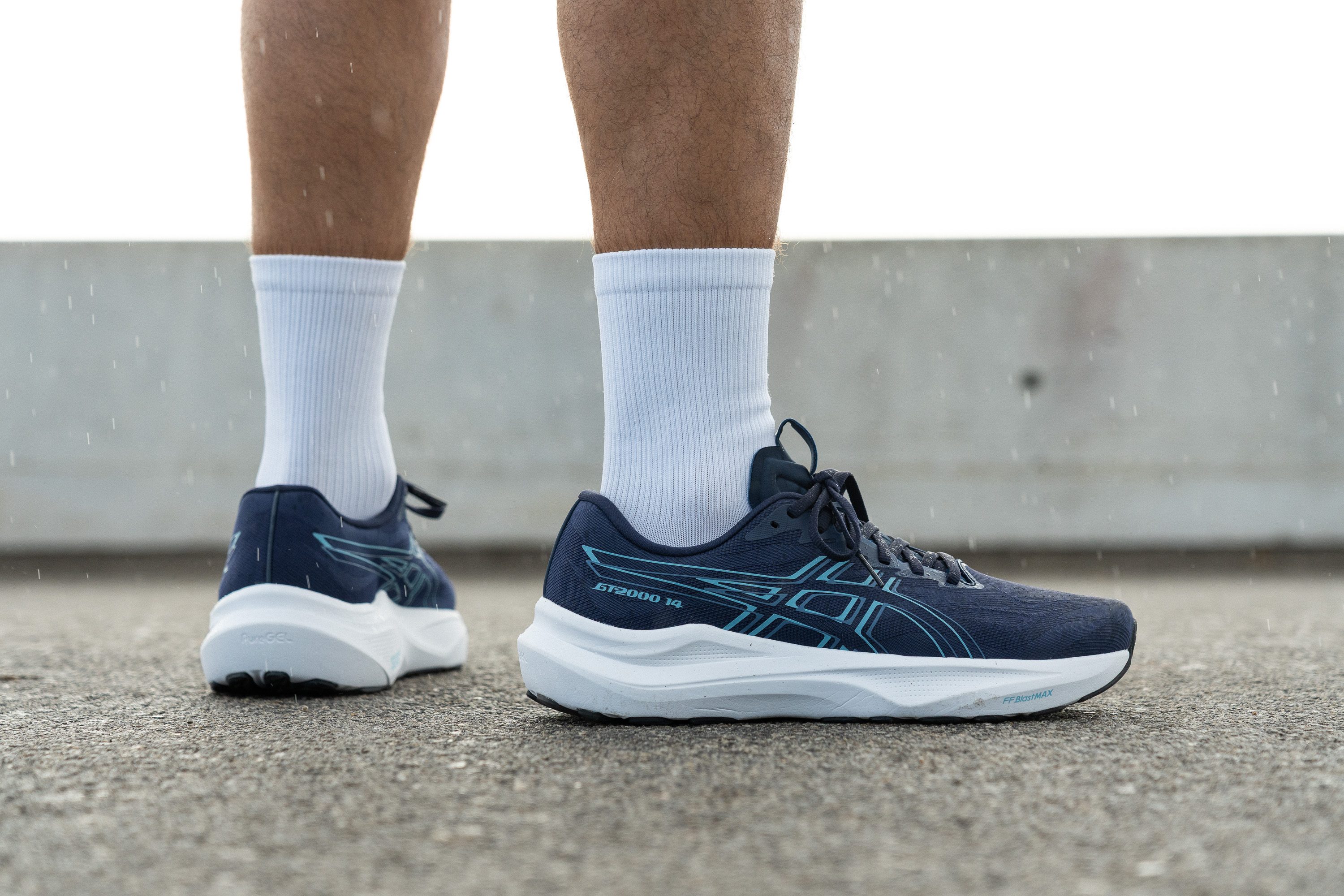
Who should NOT buy
We think the ASICS GT 2000 14 is not the best option for heavier runners or those who crave maximum underfoot cushioning. In our experience, its setup feels modest for today’s standards—especially for forefoot strikers or heavier runners—so we recommend the ASICS Gel Kayano 32 as a cushy alternative.
Additionally, we believe the tapered toebox could be a limiting factor. After testing in the lab, we discovered it's a bit restrictive, which makes it unsuitable for those who need extra room for toe splay. For a more roomy fit, we suggest the Altra Experience Form or the Adidas Supernova Solution.
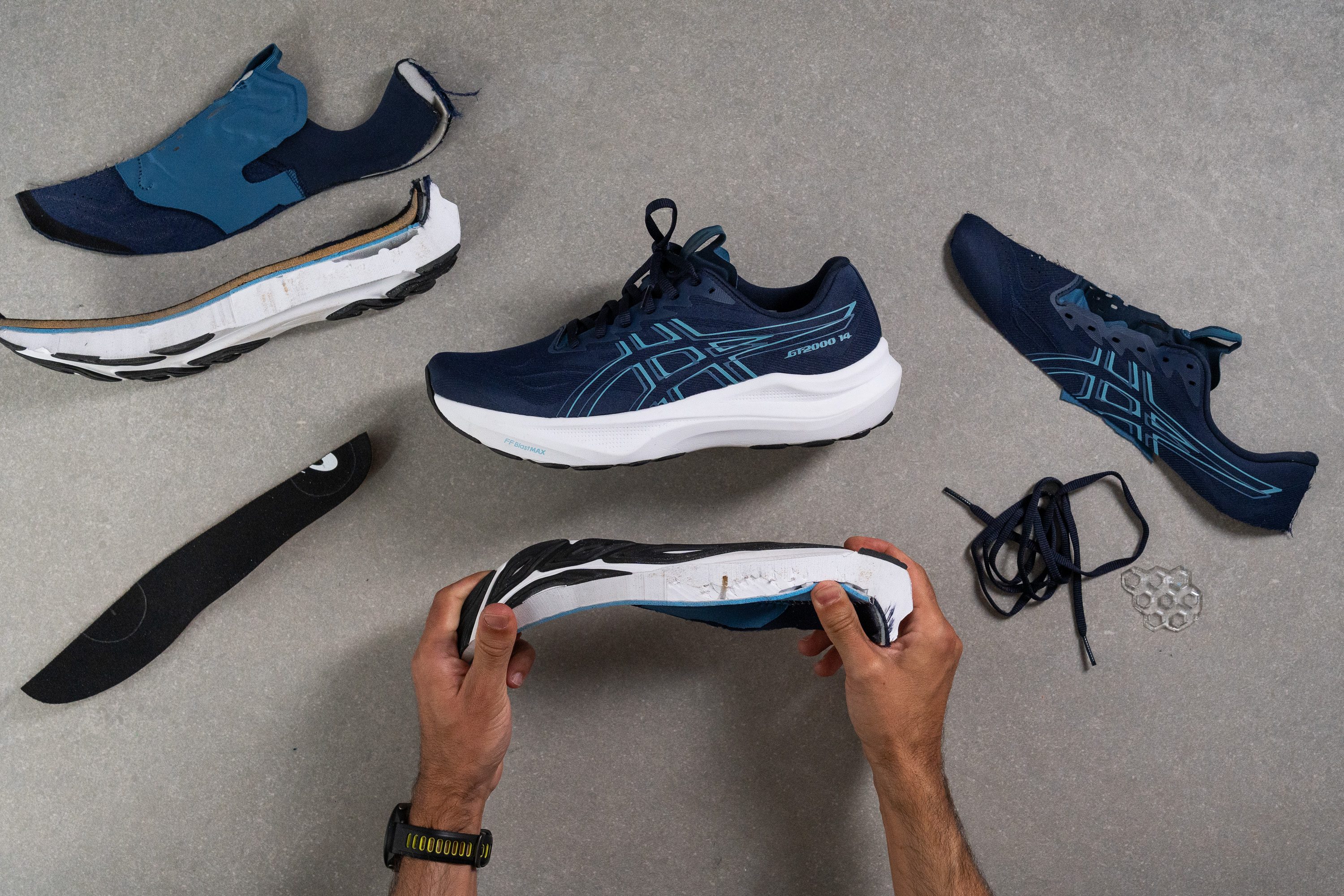
Cushioning
Shock absorption
The change from FF Blast+ to FF Blast Max brings stronger shock absorption—just like we tested in the Novablast 5—while still keeping the same reasonable stack height.
In our lab test, we measured 132 SA in the heel and 110 SA in the forefoot. This setup provides a smooth yet protective ride while keeping a ground-connected feel, adding more comfort for long runs and extra protection for heel strikers compared to earlier editions.
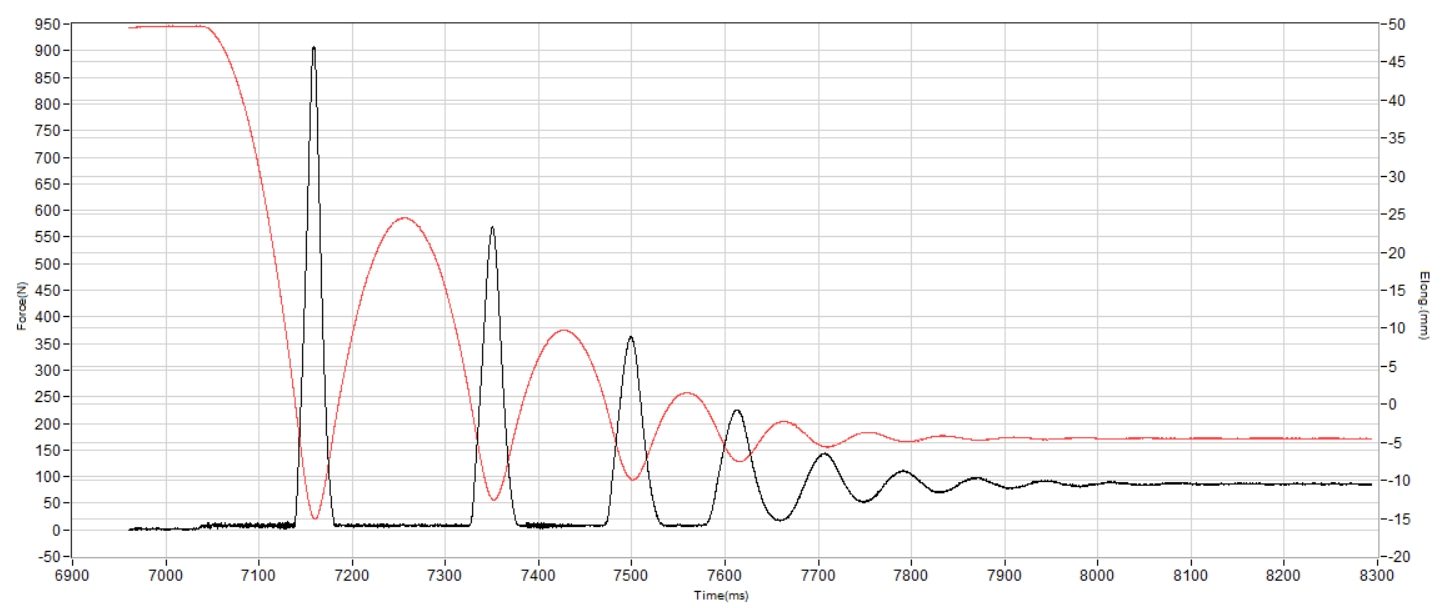
| GT 2000 14 | 132 SA |
| Average | 129 SA |
Energy return
When we tested the GT 2000 13 here in the lab, we found its energy return extremely low, which was a deal-breaker for performance seekers.
With the switch to FF Blast Max, we discovered a noticeable boost to 56.0% in the heel and 57.2% in the forefoot. These are still average numbers, not lightning-fast levels, but they’re no longer disappointing.
| GT 2000 14 | 56.0% |
| Average | 58.5% |
Heel stack
ASICS lists the heel stack at 36.5 mm, and we measured a near-identical 36.9 mm. This is perfect for the GT 2000, staying clear of maximalist territory while still delivering ample cushioning to handle most runs and safeguard joints and muscles.
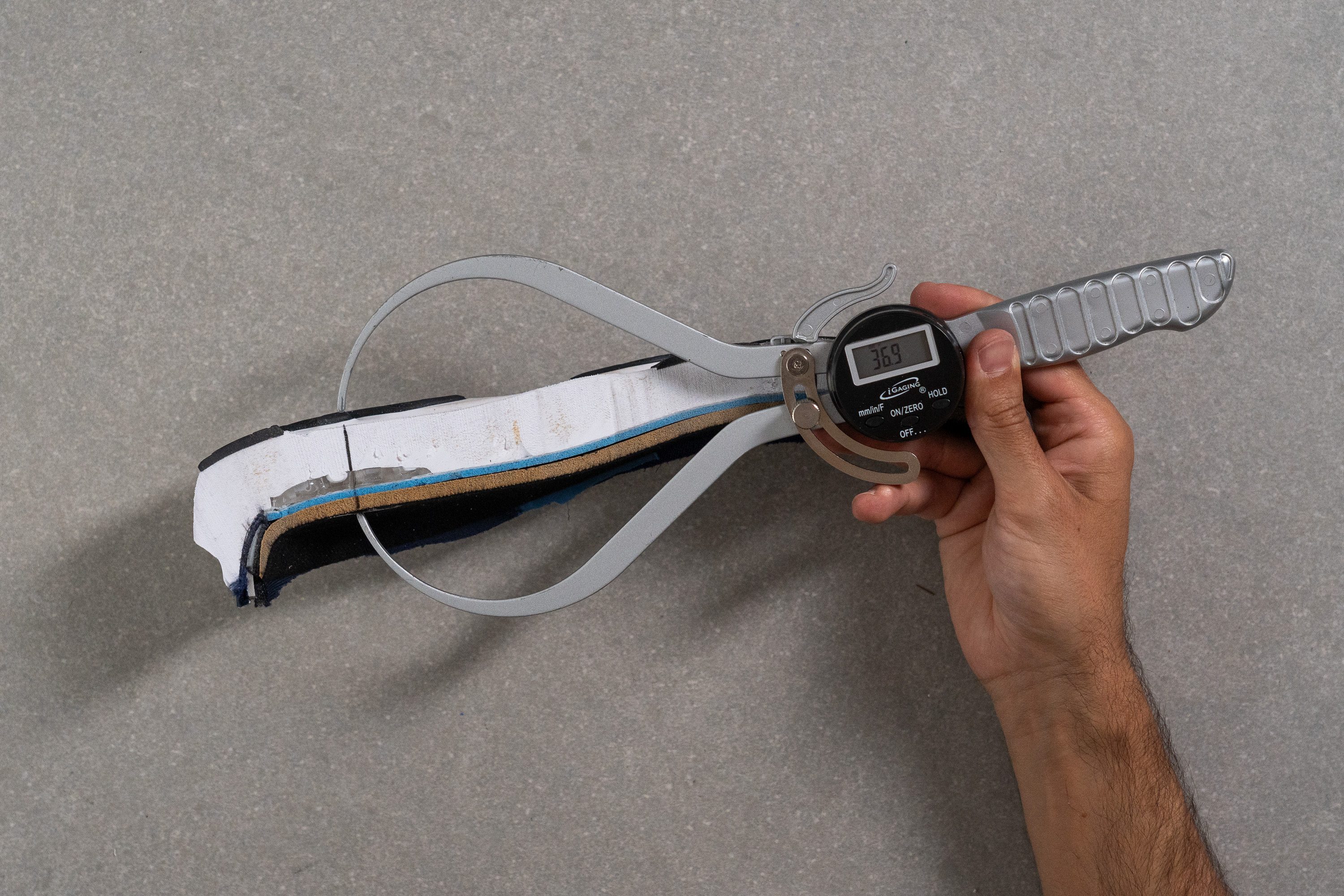
| GT 2000 14 | 36.9 mm |
| Average | 34.8 mm |
Forefoot stack
We found a forefoot stack of 28.2 mm, which we believe suits runners using a midfoot or forefoot strike. This setup also makes the shoe a reliable choice for tackling long-distance training without compromise.
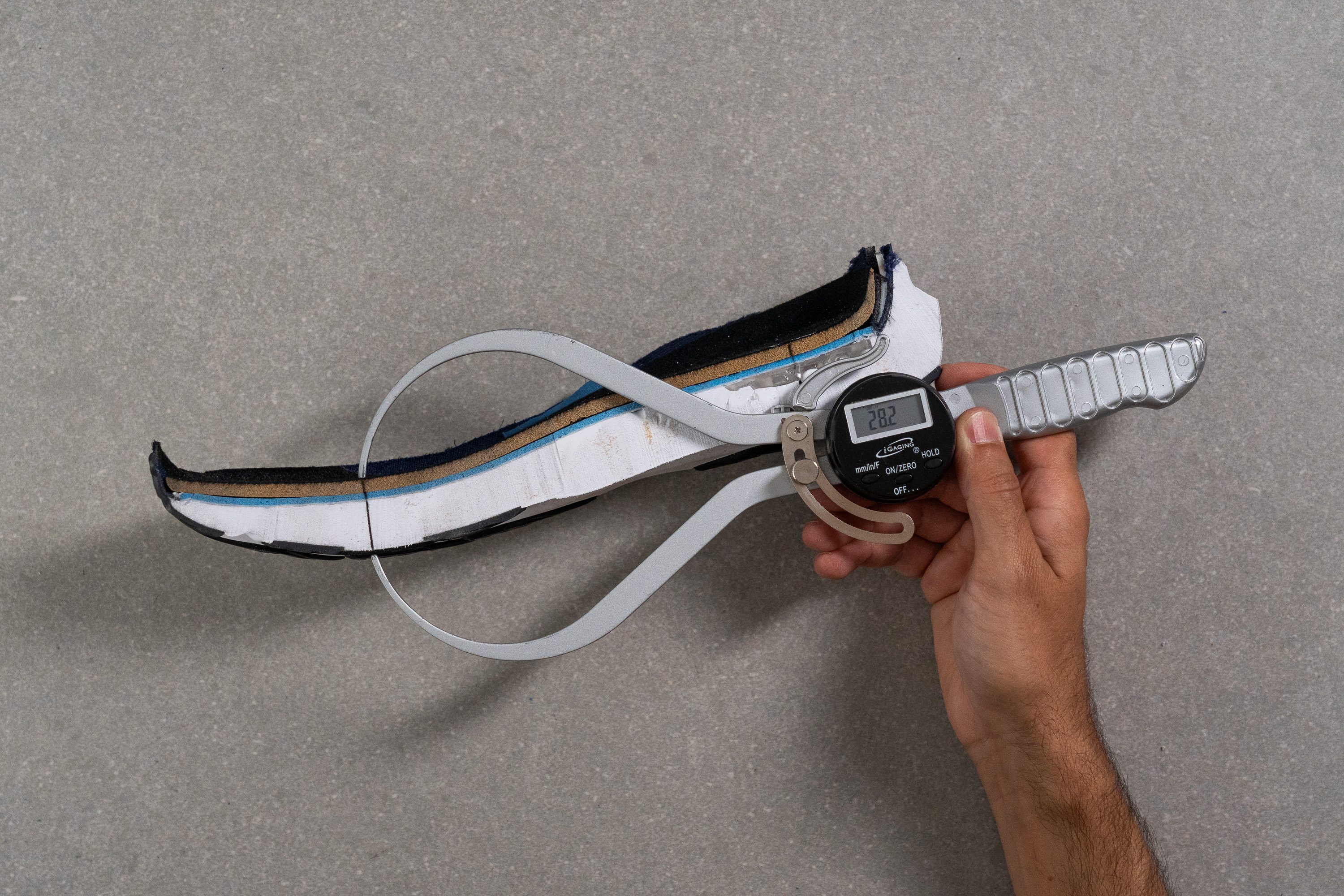
| GT 2000 14 | 28.2 mm |
| Average | 26.2 mm |
Drop
The GT 2000 series has long featured an official 8 mm drop, and unlike many shoes we tested, our lab results usually are close to that claim.
For the GT 2000 14, our callipers measured 8.7 mm at the World Athletics points, confirming a setup that stays versatile for every footstrike without being overly steep.
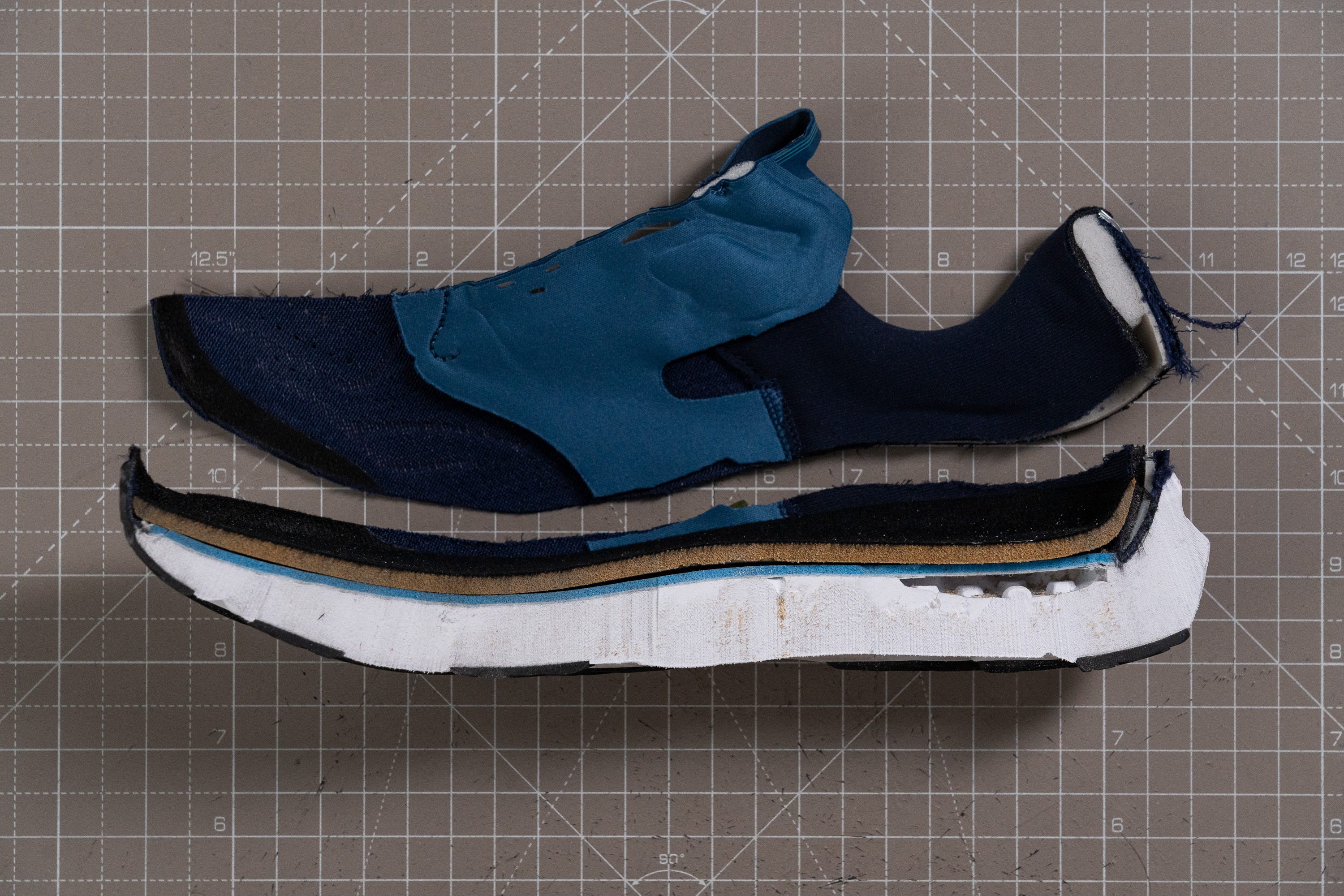
| GT 2000 14 | 8.7 mm |
| Average | 8.6 mm |
Midsole softness
The move from FF Blast+ to FF Blast Max introduces a small tweak, as the midsole feels slightly softer than before. Still, don’t expect a cloud-like ride because this is a stability shoe, and going ultra-soft would compromise its purpose.
We tested it four times and averaged the numbers, landing at 17.4 HA. From our perspective, this is a smart choice because it also avoids the super-firm feel of many stability shoes, which can feel a bit odd for a shoe launched in 2025.
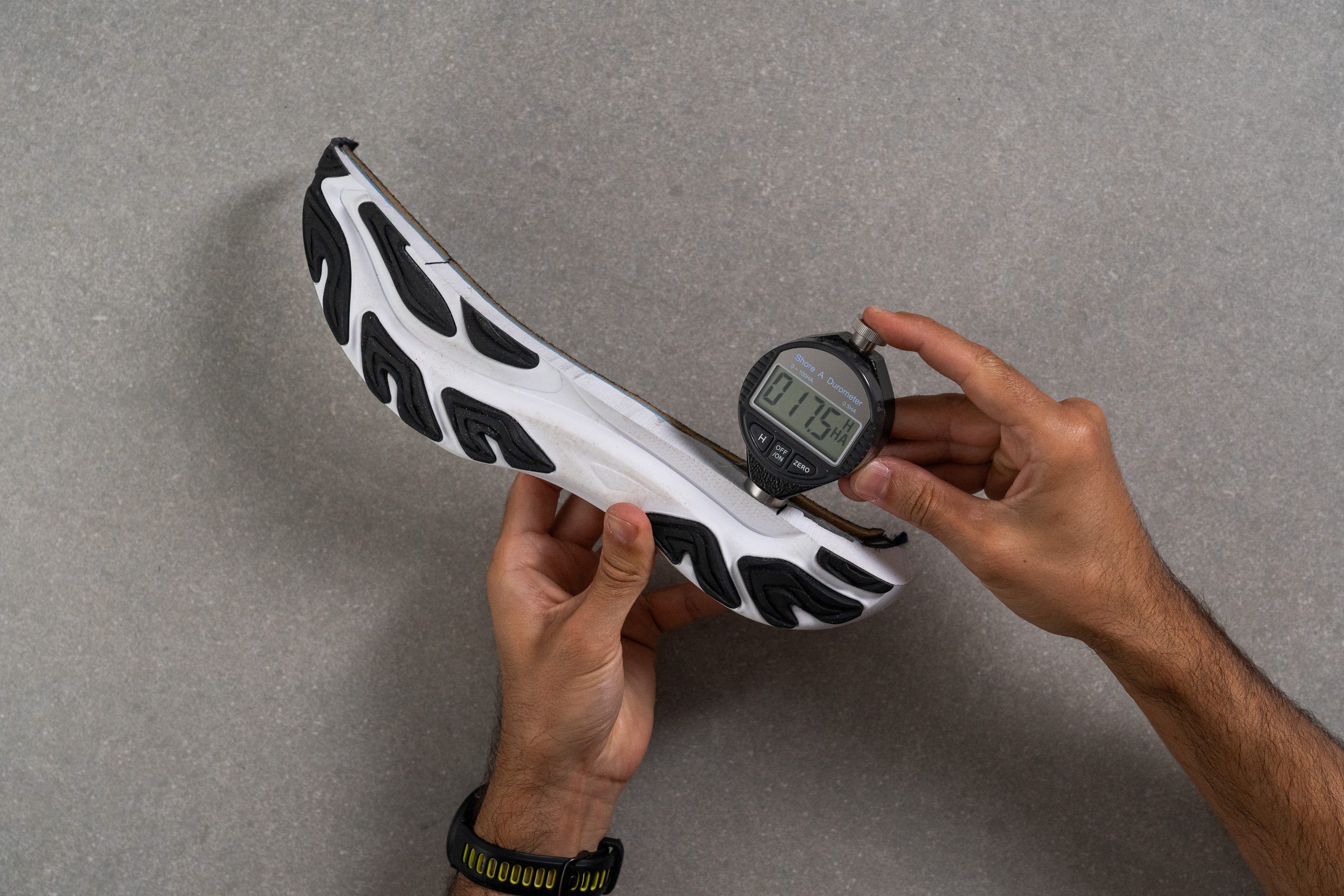
| GT 2000 14 | 17.4 HA |
| Average | 20.4 HA |
Rocker
The rocker of the GT 2000 14 uses a classic heel design with a smooth, subtle curve, so runners shouldn’t expect major assistance during transitions. This lets heel strikers move naturally without aggressive rolling, keeping the geometry stable and familiar.
Up front, the rocker also engages slowly with only a mild upward curve, creating a natural toe-off that stays connected to the ground and avoids a stiff feel.
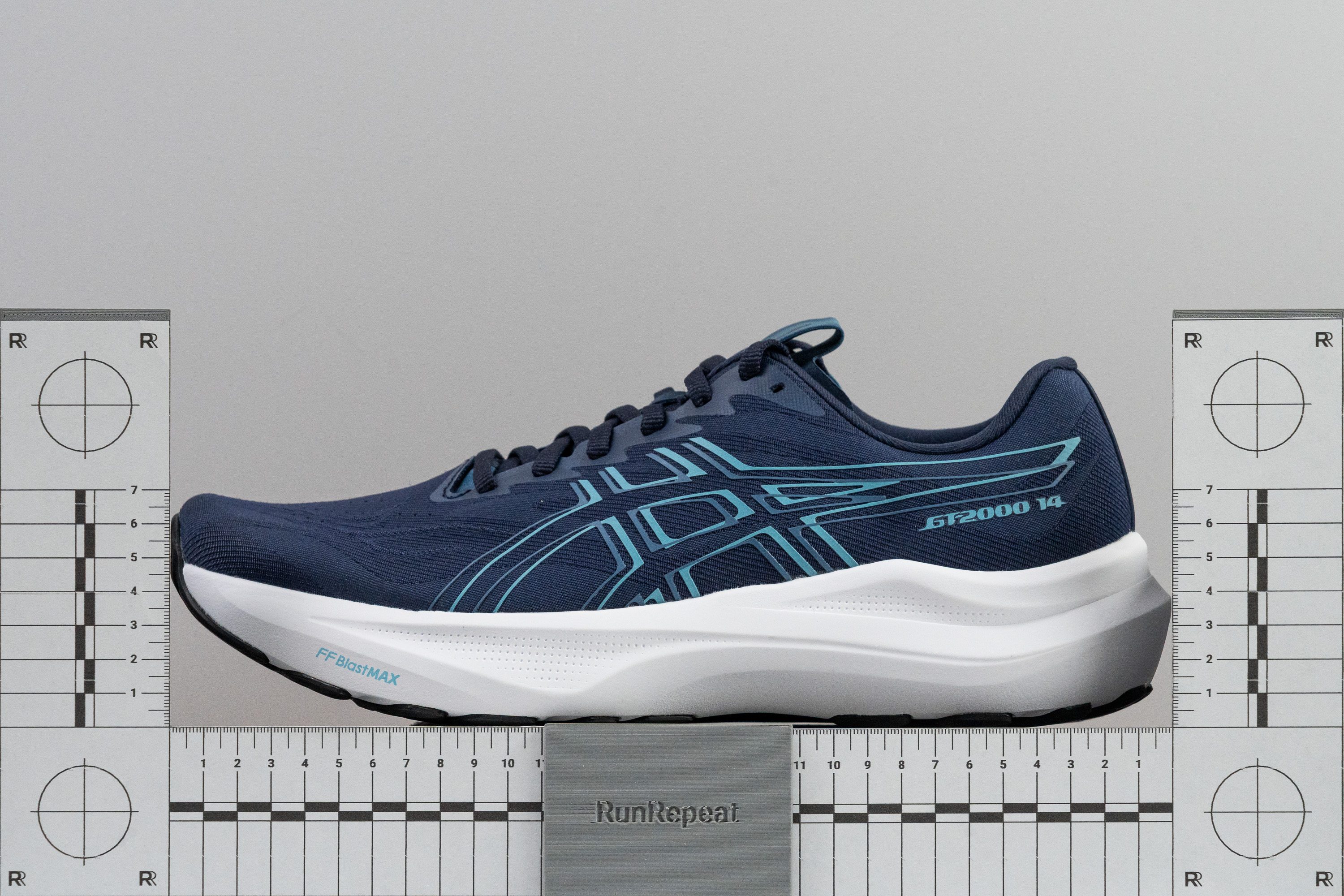
PureGEL
The GT 2000 14 still carries the PureGEL piece in the heel, and we’re not convinced it adds much. While it softens landings, the extra weight and limited bounce don’t feel worth the trade-off.
Perhaps it’s time to move on.
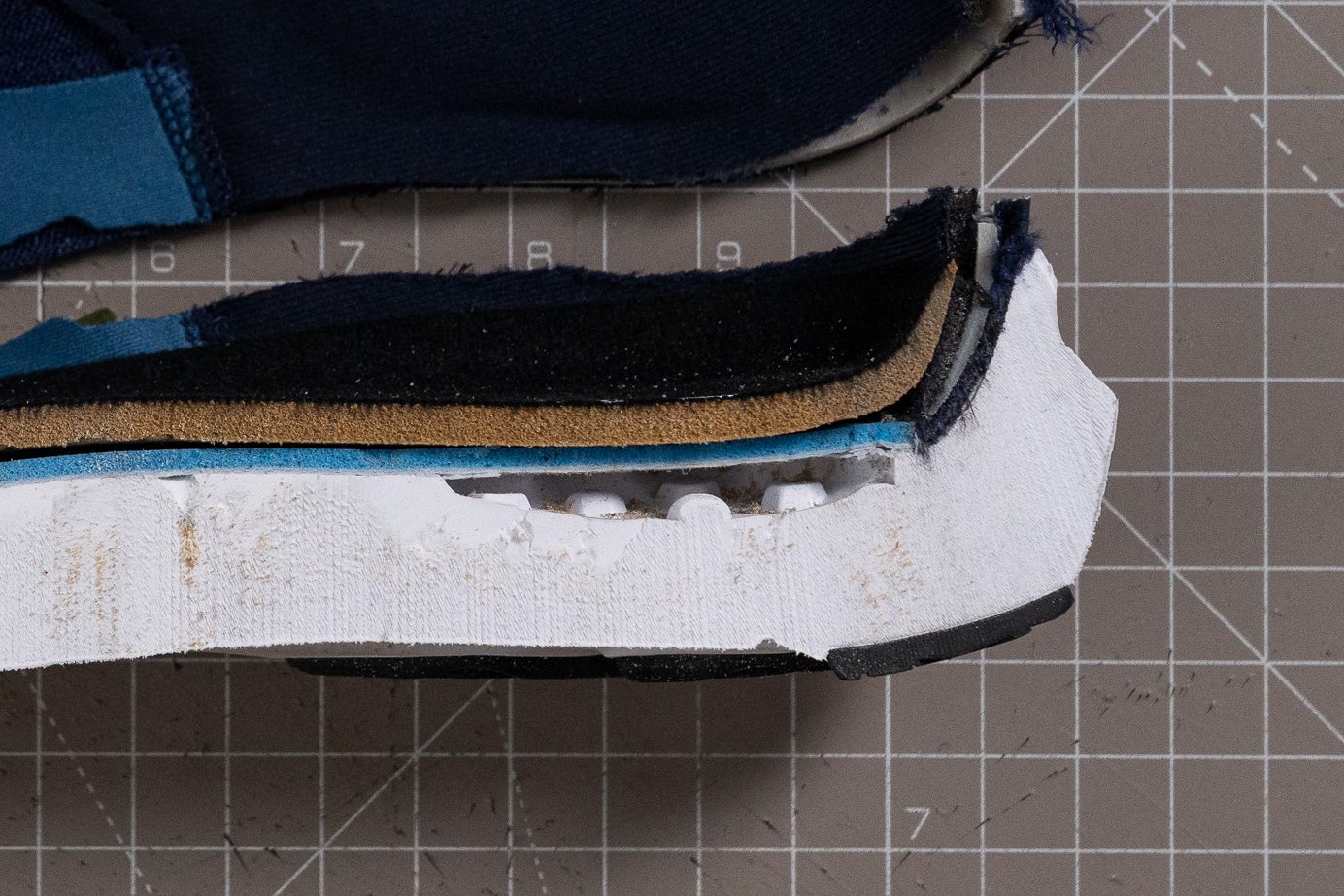
Size and fit
Size
ASICS GT 2000 14 fits true to size (25 votes).
Width / Fit
We tested the GT 2000 14’s interior with a gel mould to check the fit and compare it to other running shoes.
We discovered a width of 94.5 mm. That's slightly below the average, yet really close to it.
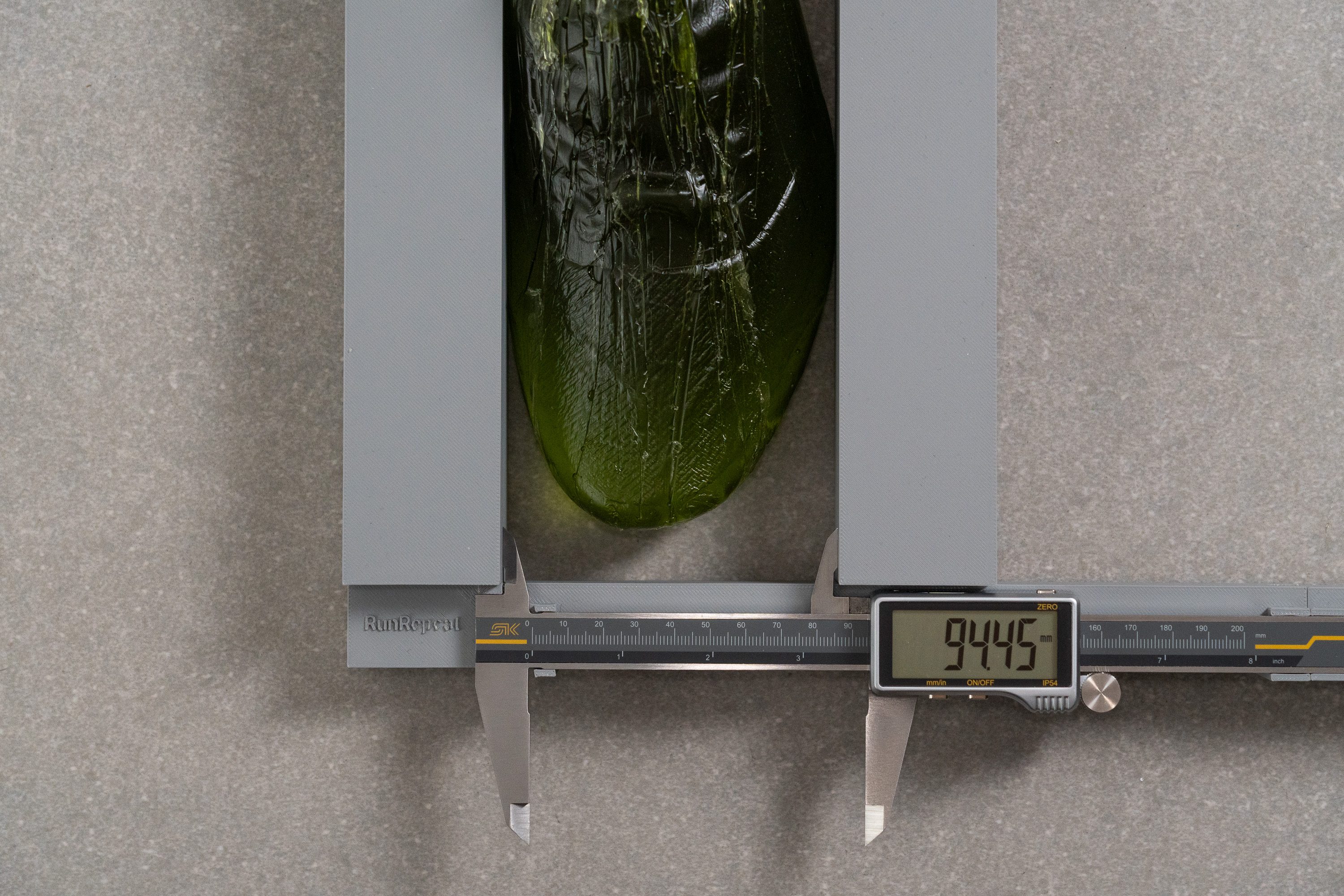
| GT 2000 14 | 94.5 mm |
| Average | 95.1 mm |
Toebox width
Next, we tested the toebox and discovered a narrow 68.4 mm measurement, which won’t suit everyone and works better for runners without wide feet.
Fortunately, ASICS also makes this shoe in a wide version—though take into account that availability varies by country.
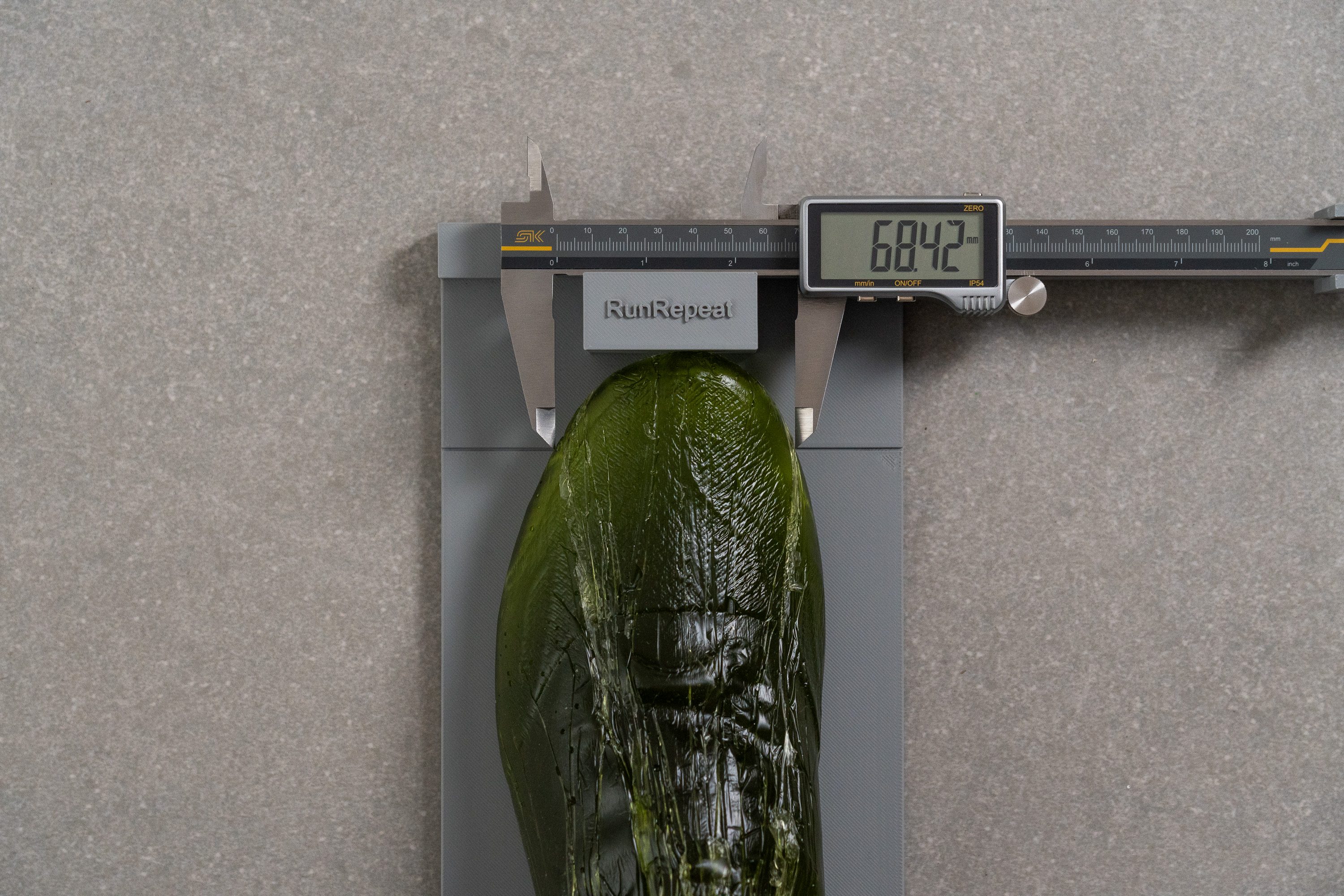
| GT 2000 14 | 68.4 mm |
| Average | 73.3 mm |
Toebox height
We tested the toebox height and discovered another low result with just 24.9 mm of vertical space.
From our perspective, this is the most limiting factor. It makes the GT 2000 14 better suited for low-volume, narrow feet.
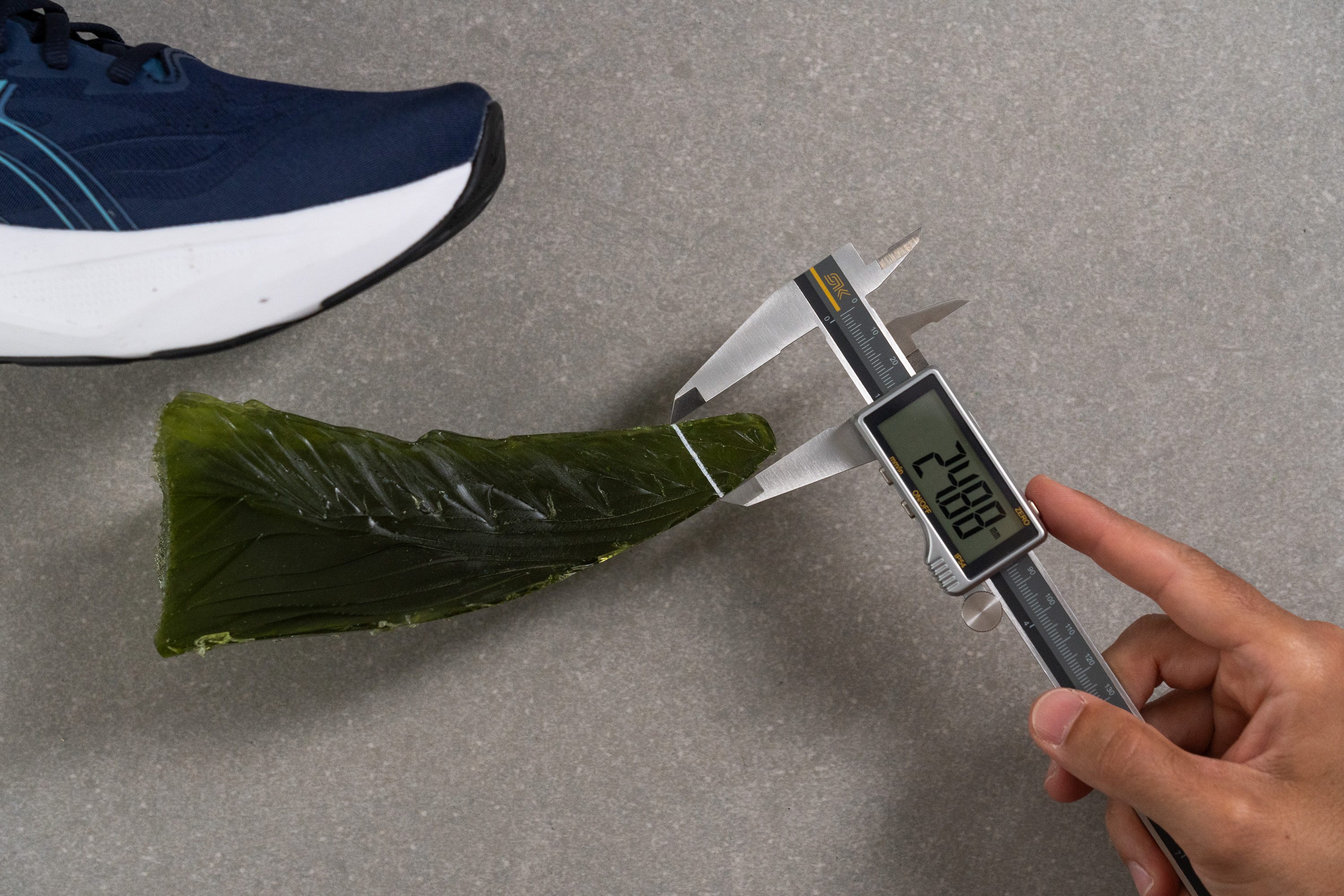
| GT 2000 14 | 24.9 mm |
| Average | 27.1 mm |
Traction / Grip
Traction test
While the midsole moved forward with FF Blast Max, the outsole stays with AHAR, mixing AHAR+ and AHAR LO but leaving out ASICSGRIP, which we’ve tested in other models like the Superblast 2 and found amazing.
Still, our traction test showed a 0.47 score, delivering solid grip on wet pavement, dry roads, and even dirt paths. And it's the same score from last year despite the outsole redesign.
| GT 2000 14 | 0.47 |
| Average | 0.48 |
Outsole design
The outsole of the GT 2000 14 uses thick rubber placed in segmented pods across the forefoot and heel. The rubber lugs are shaped with flame-like cutouts, and the forefoot features a central pod to the one found in the Novablast series.
Compared to the GT 2000 13, which had more uniform and block-shaped rubber coverage, the v14 introduces a modern layout with deeper cutouts and less continuous rubber. However, the coverage on the medial side remains notable, which is great for pronators.
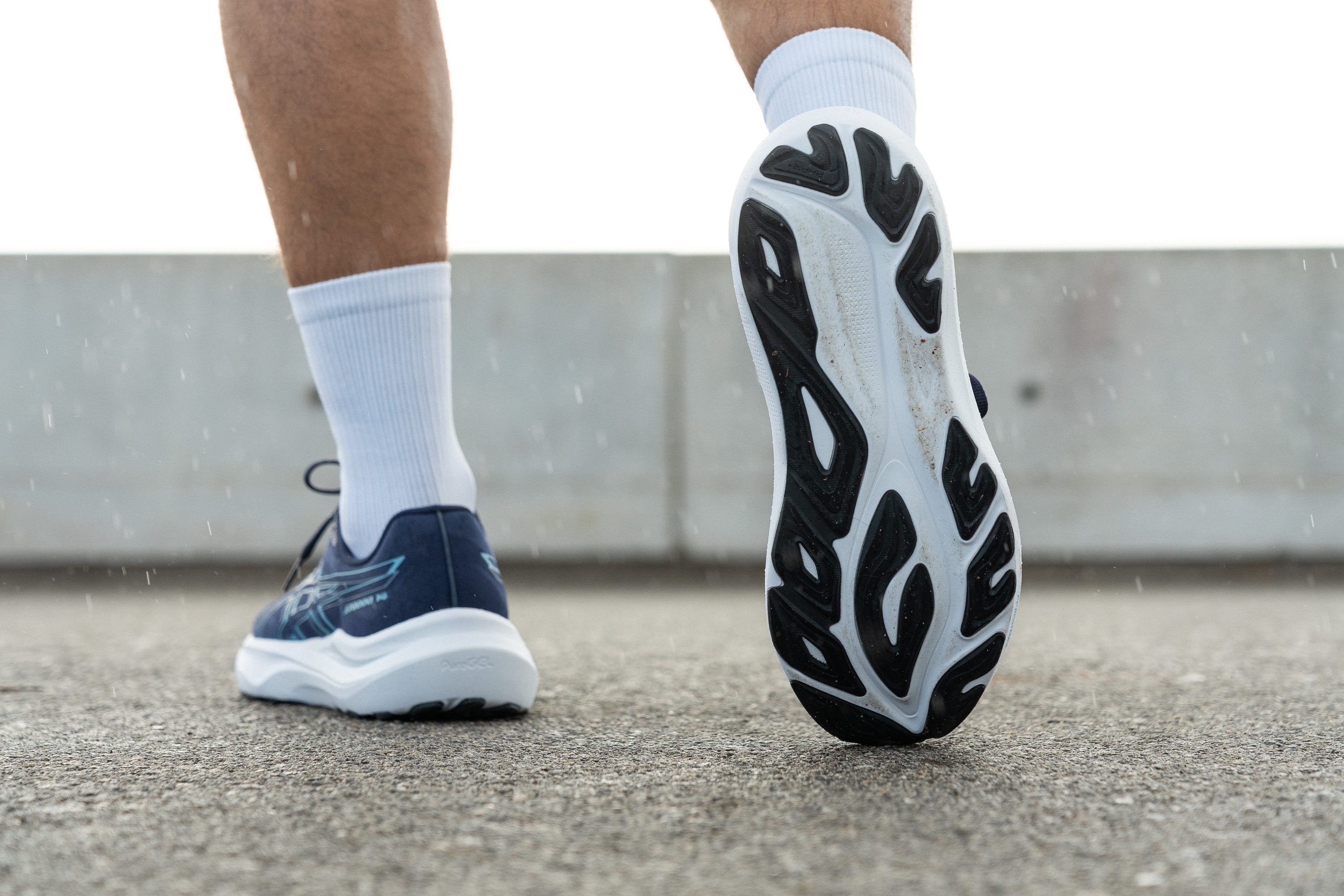
Flexibility / Stiffness
Flexibility remains around the average at 15.0N, which is expected for a shoe with a moderate stack height designed to manage pronation. We see this as a positive, since the GT 2000 14 aims to disappear underfoot and simply do its job.
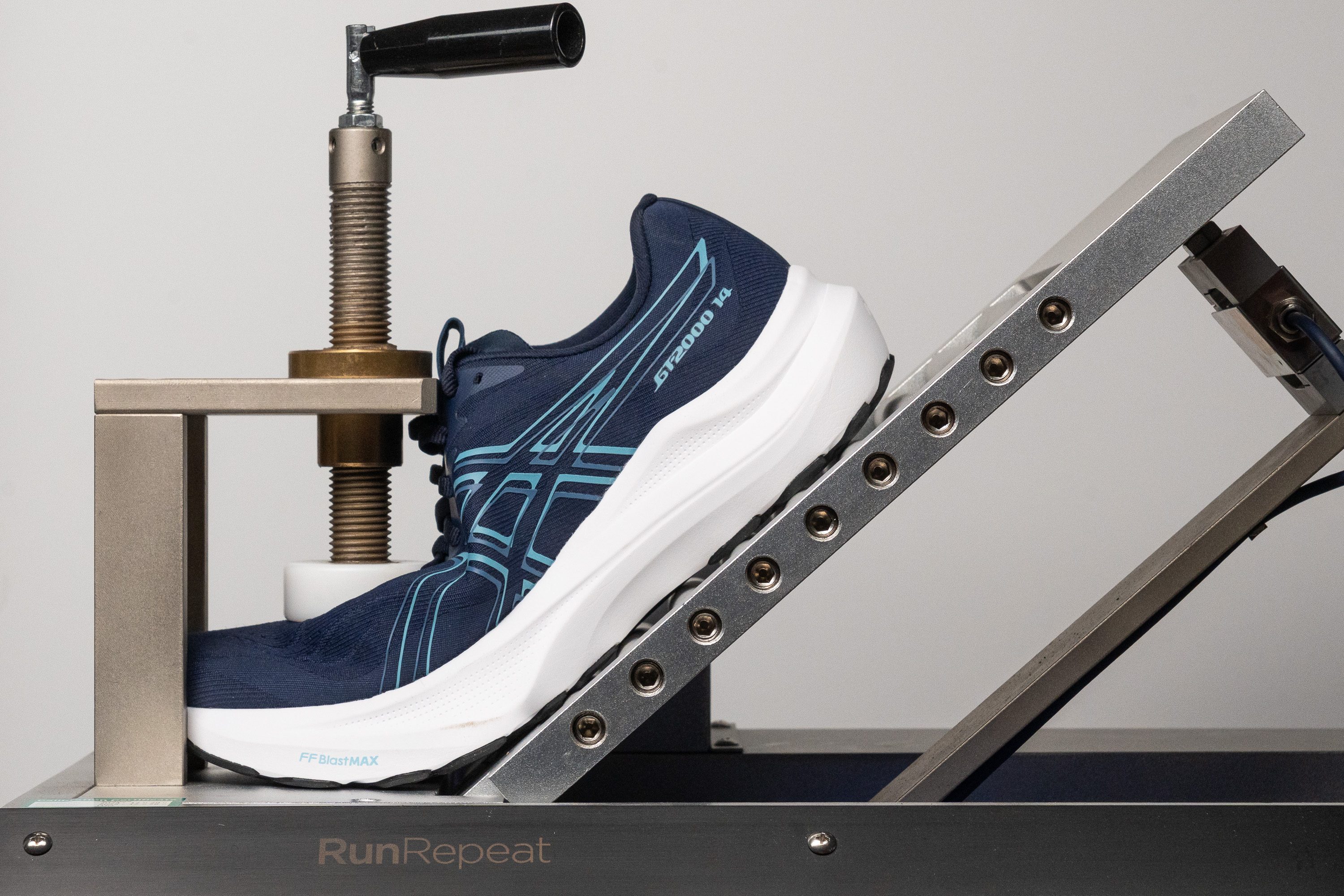
| GT 2000 14 | 15.0N |
| Average | 15.3N |
Weight
There’s a slight weight gain from v13, but the minor 2% increase is barely noticeable underfoot. We measured 9.5 oz or 269g, which remains very reasonable for a stability shoe.
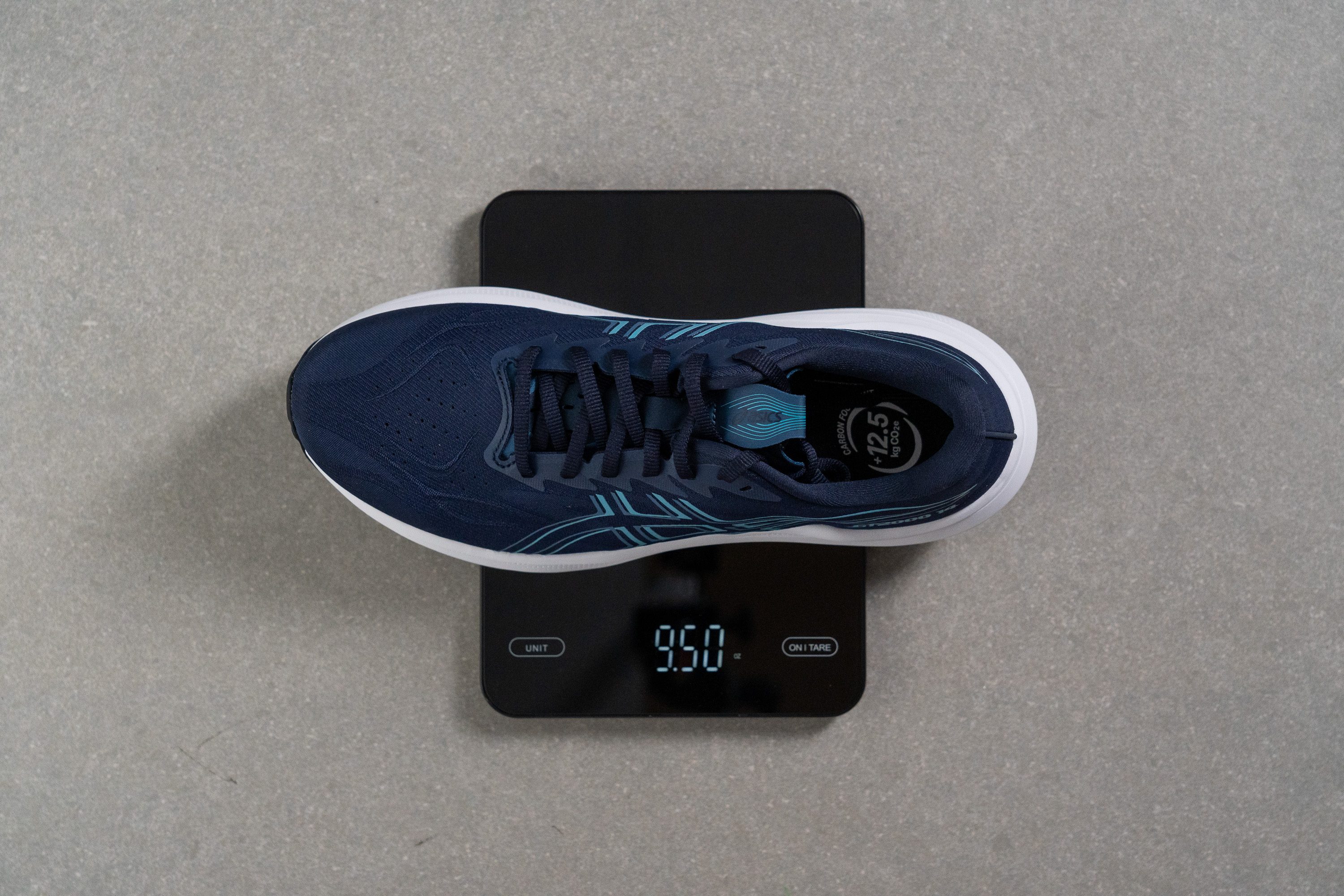
| GT 2000 14 | 9.5 oz (269g) |
| Average | 9.3 oz (264g) |
Breathability
The GT 2000 14 scored only 2/5 in our smoke test, a clear drop from the previous version’s 4/5. Airflow is restricted, which can feel uncomfortable in hot weather but pleasantly warm when the temperature falls.
The cause is straightforward. While ASICS added small ventilation holes in the toebox, the rest of the upper is built to add stability. A thicker mesh better contains lateral forces, but it also traps heat inside the shoe.
When we examined the upper under our digital microscope, we discovered a dense engineered mesh with circular punched eyelets.
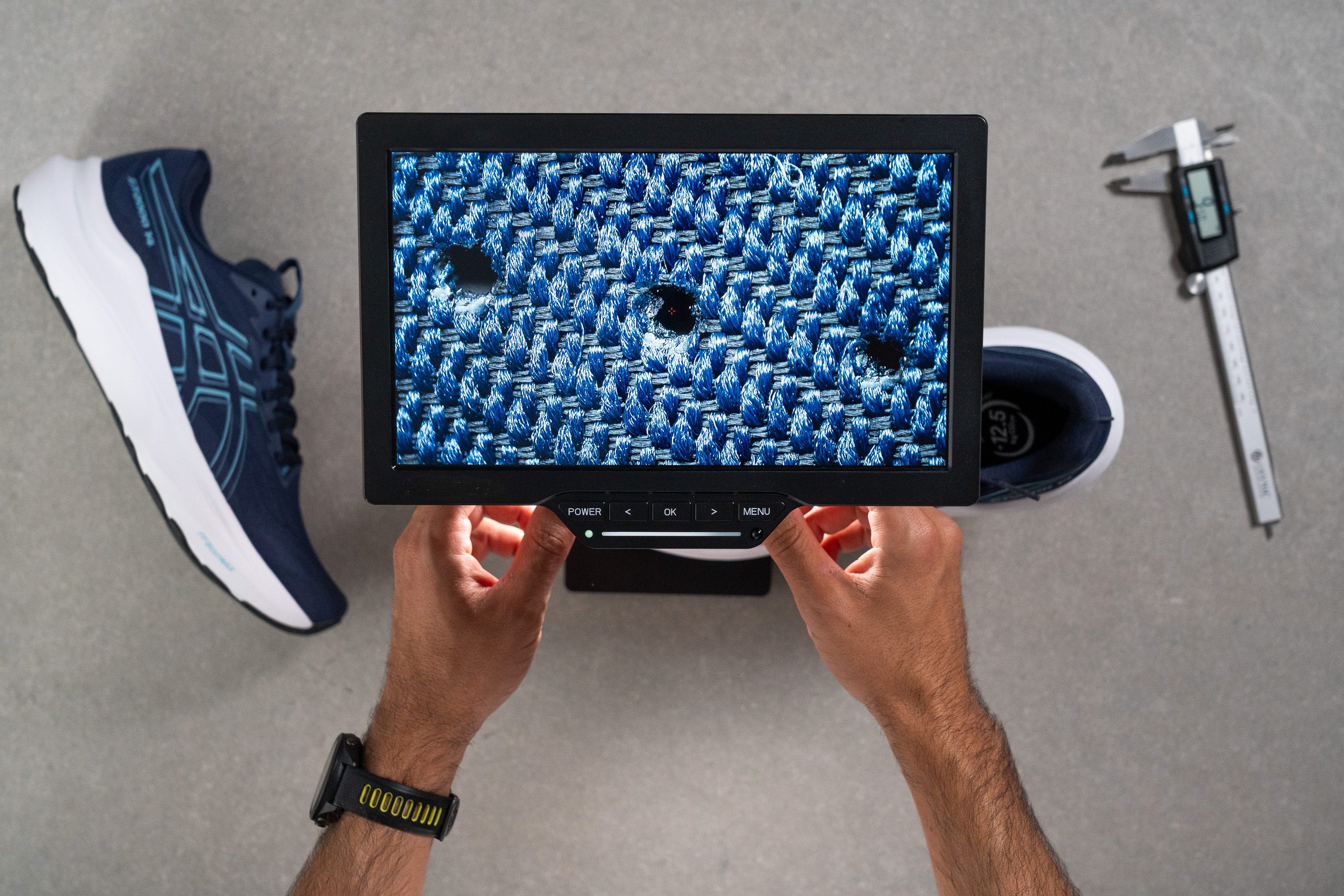
It’s an unusual design compared to what we usually observe in the lab. The upper is built from multi-filament synthetic yarns arranged in a compact grid. Unlike traditional engineered mesh designs, this structure prioritises support.
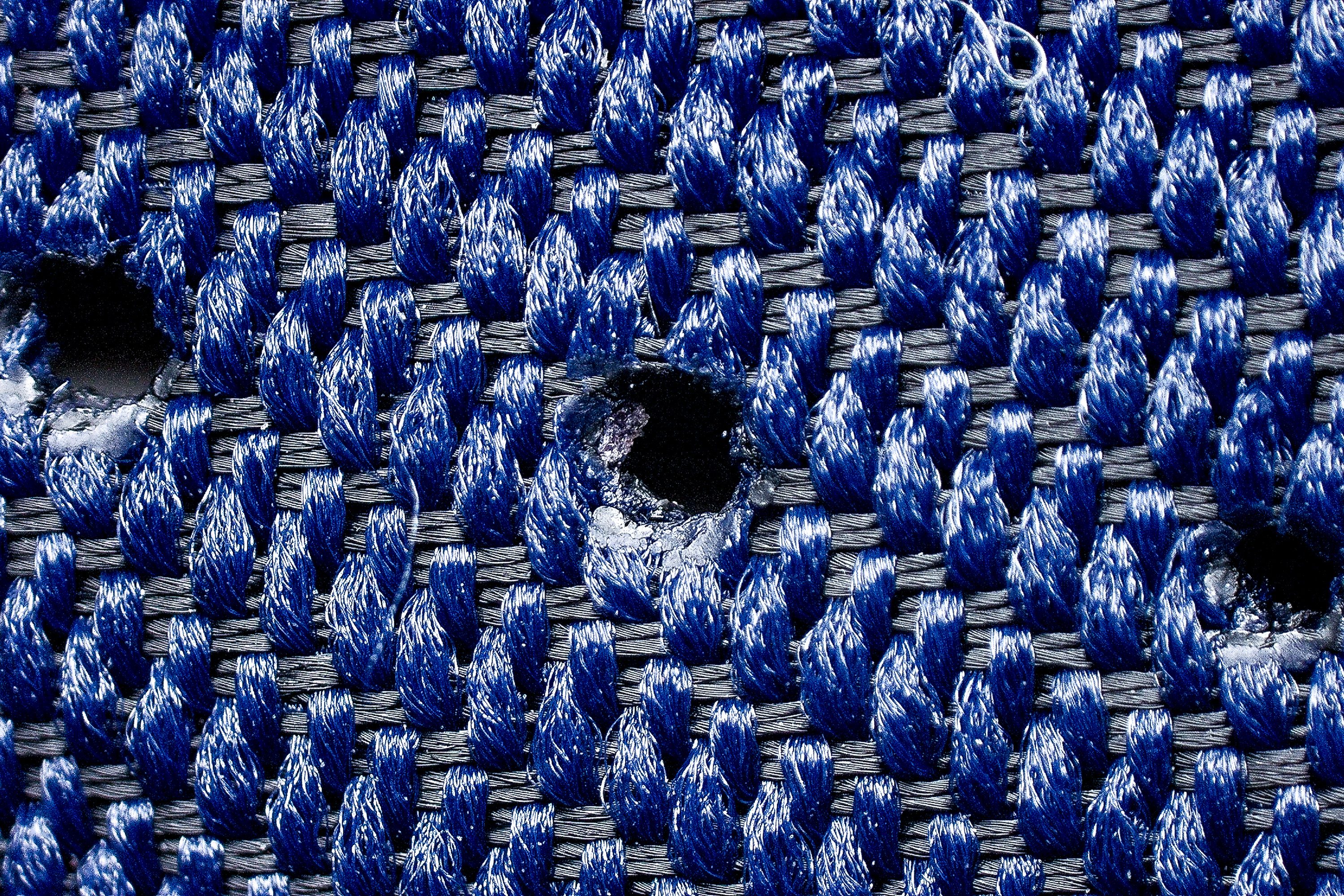
The upper is well-crafted, offering sufficient padding for its weight and aligning with the shoe’s price point. Still, we wish it provided stronger ventilation... at least one or two points higher on our scale.
| GT 2000 14 | 2 |
| Average | 3.7 |
Stability
Lateral stability test
The lateral stability of the GT 2000 14 is one of its key strengths.
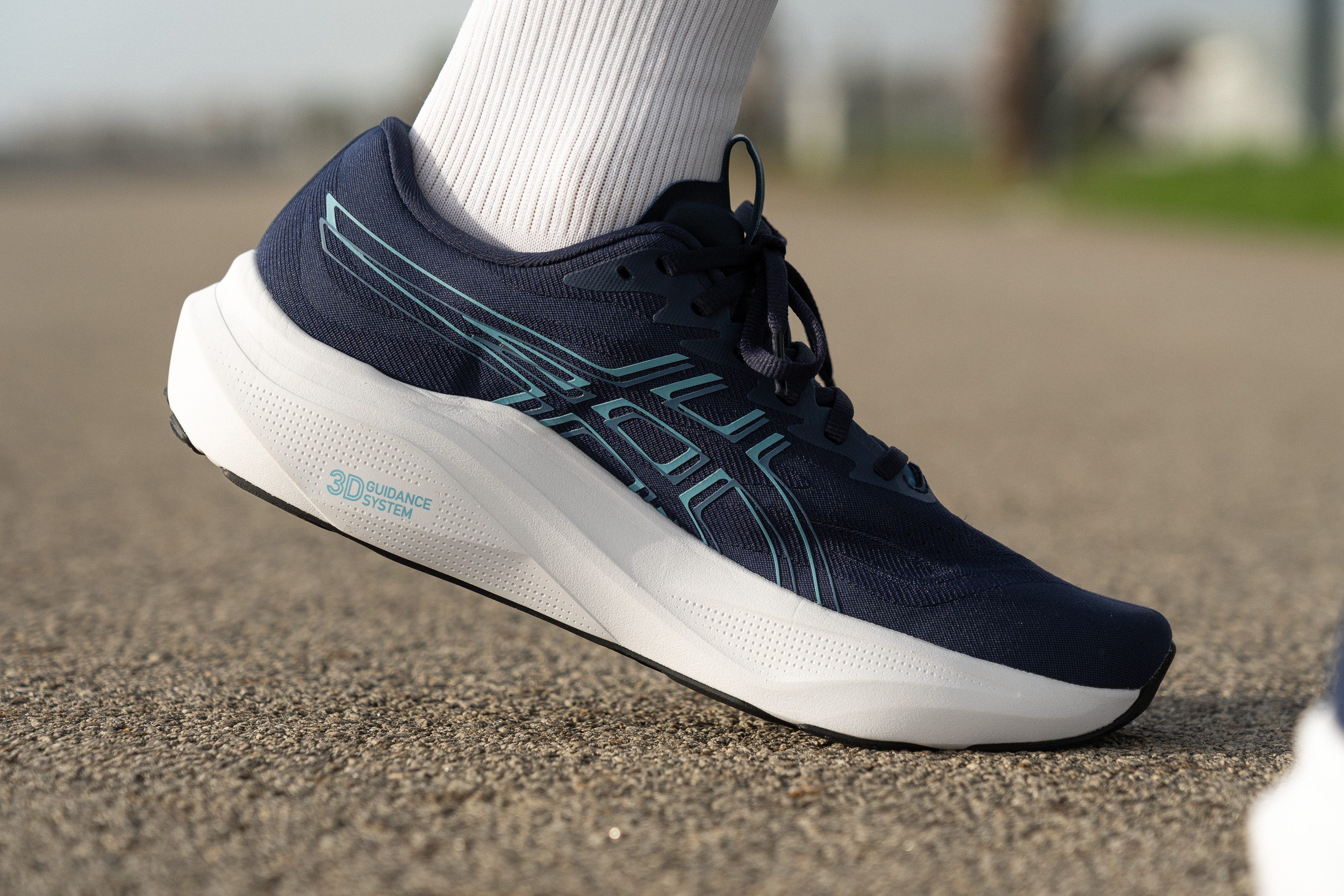
It keeps the 3D Guidance System from the previous version, which avoids a firmer arch and instead relies on a wide landing base, supportive midsole geometry that controls pronation, and high sidewalls near the midfoot for extra support.
Torsional rigidity
One small change that comes directly from the updated outsole design is a more flexible build.
Version 13 scored 5/5 in our test, which felt maybe a bit excessive for a versatile daily trainer. The new 4/5 rating seems more practical, making the shoe more comfortable for slower runs and even walking.
| GT 2000 14 | 4 |
| Average | 3.5 |
Heel counter stiffness
In terms of stiffness, ASICS kept the heel counter unchanged for another year. We measured the same 4/5 score as v12 and v13, and we’re satisfied with that result.
| GT 2000 14 | 4 |
| Average | 2.9 |
Midsole width - forefoot
One of the defining features of the GT 2000 series is its ability to provide stability without feeling bulky. How? It skips a super-high stack height and keeps a compact design by modern standards.
When we measured it with our callipers, we discovered 117.6 mm in the forefoot—slightly above average and positioned right between the proportions of a neutral daily trainer and the broader build of a full stability shoe.
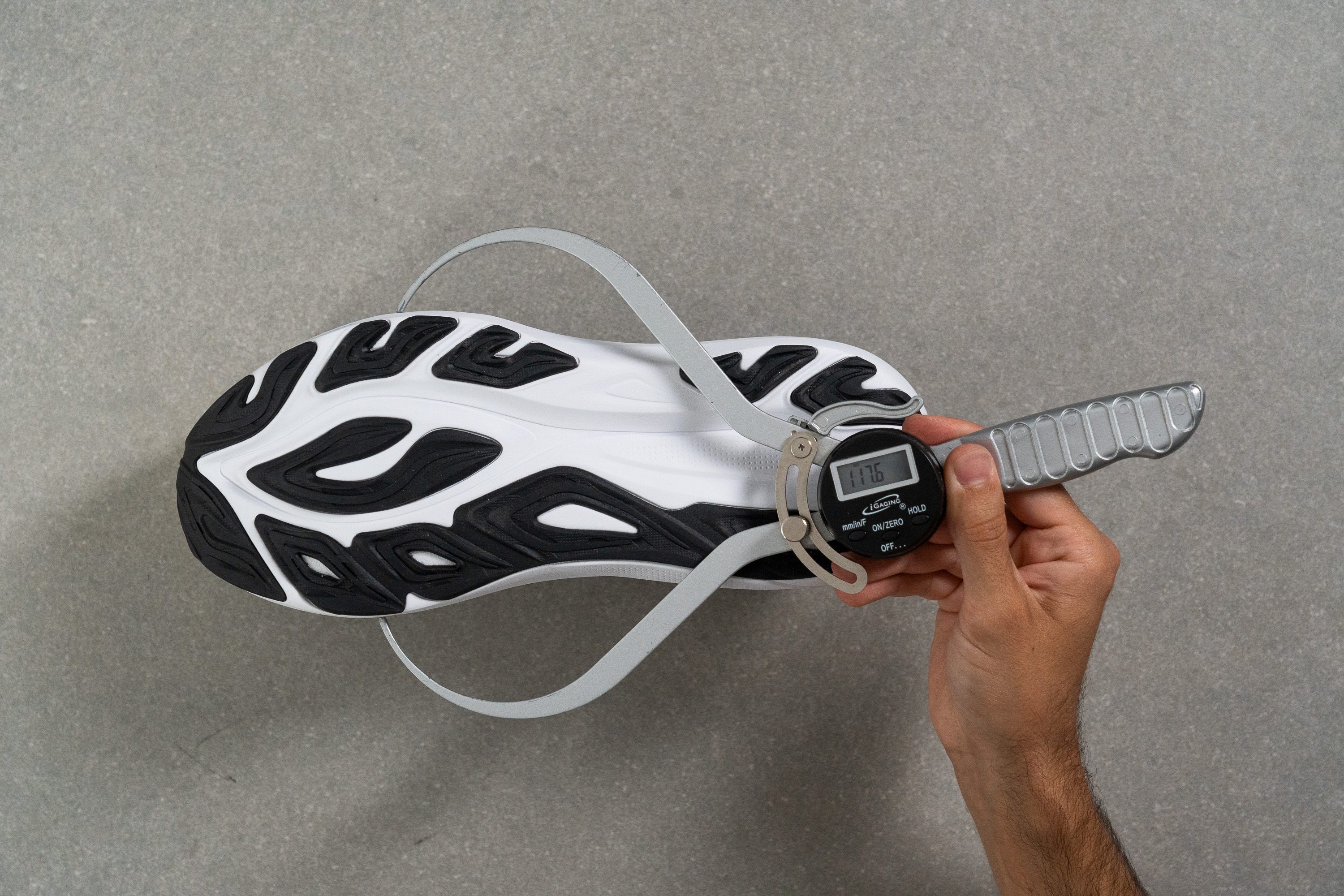
| GT 2000 14 | 117.6 mm |
| Average | 114.4 mm |
Midsole width - heel
The heel is a bit more wide in comparison, but that makes sense given that delivering stability in the rearfoot requires is trickier than doing so in the forefoot.
That said, ASICS took a step back from last year, as here we found 97.1 mm instead of 102.2 mm from v13, which was a bit overbuilt for a mild-stability shoe like this.
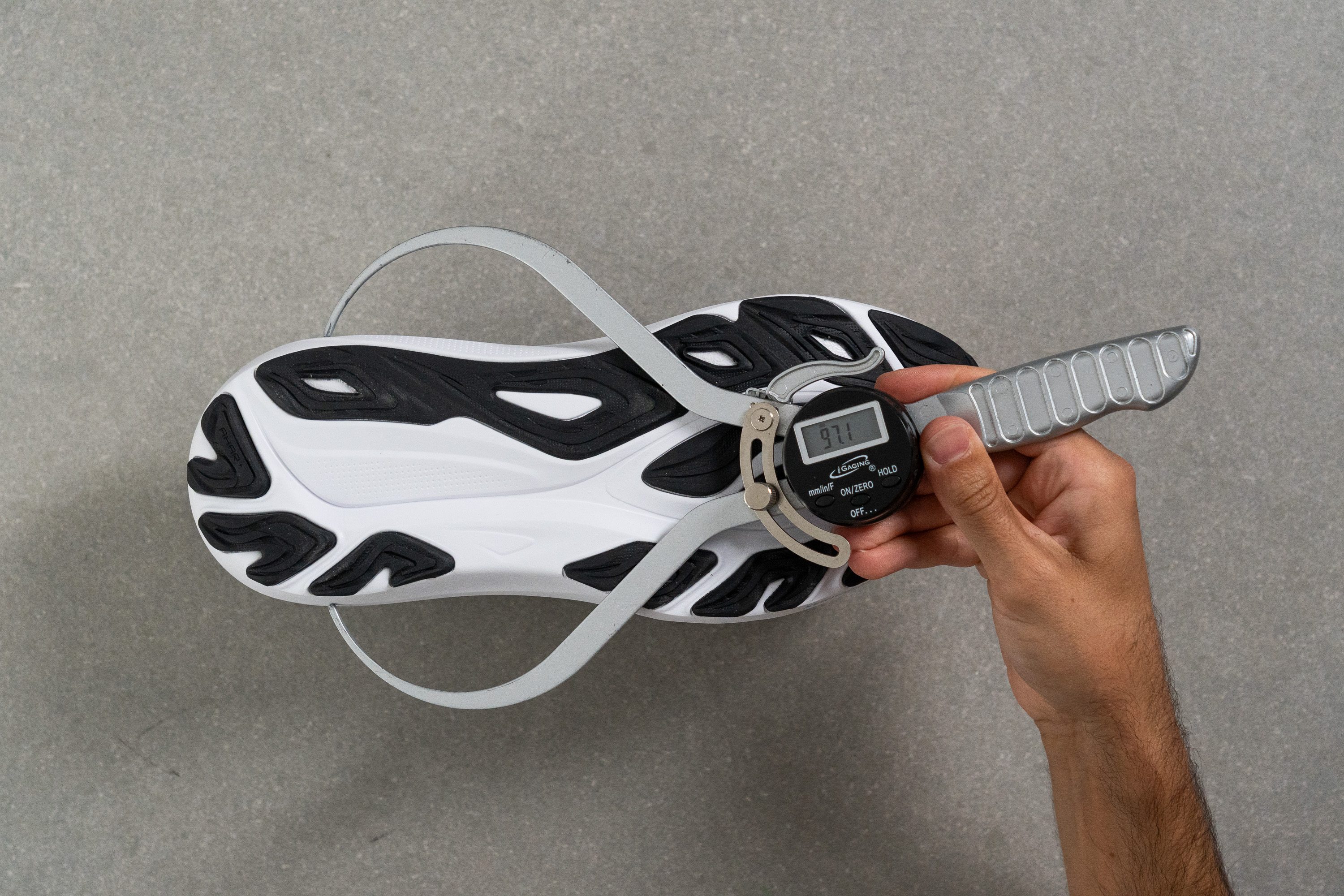
| GT 2000 14 | 97.1 mm |
| Average | 90.7 mm |
Durability
Toebox durability
With such low ventilation, we expected durability to score much higher than the 2/5 we recorded in the lab. ASICS really needs to improve in this area.
| GT 2000 14 | 2 |
| Average | 2.6 |
Heel padding durability
On the flip side, the heel padding delivered a much stronger result with a 4/5 in our test. For runners who often wear holes in this area, the GT 2000 14 is a reliable choice.
| GT 2000 14 | 4 |
| Average | 3.4 |
Outsole durability
But for many runners dealing with pronation, the key durability test is always the outsole.
In our lab, the GT 2000 14 aced it! We discovered just a tiny 0.5 mm dent after the Dremel test, proving its extra-durable build.
| GT 2000 14 | 0.5 mm |
| Average | 1.1 mm |
Outsole thickness
It seems to us that ASICS built the GT 2000 14’s outsole to last nearly forever. Along with its strong abrasion resistance, we measured a substantial 4.0 mm thickness, which is higher than most stability shoes.
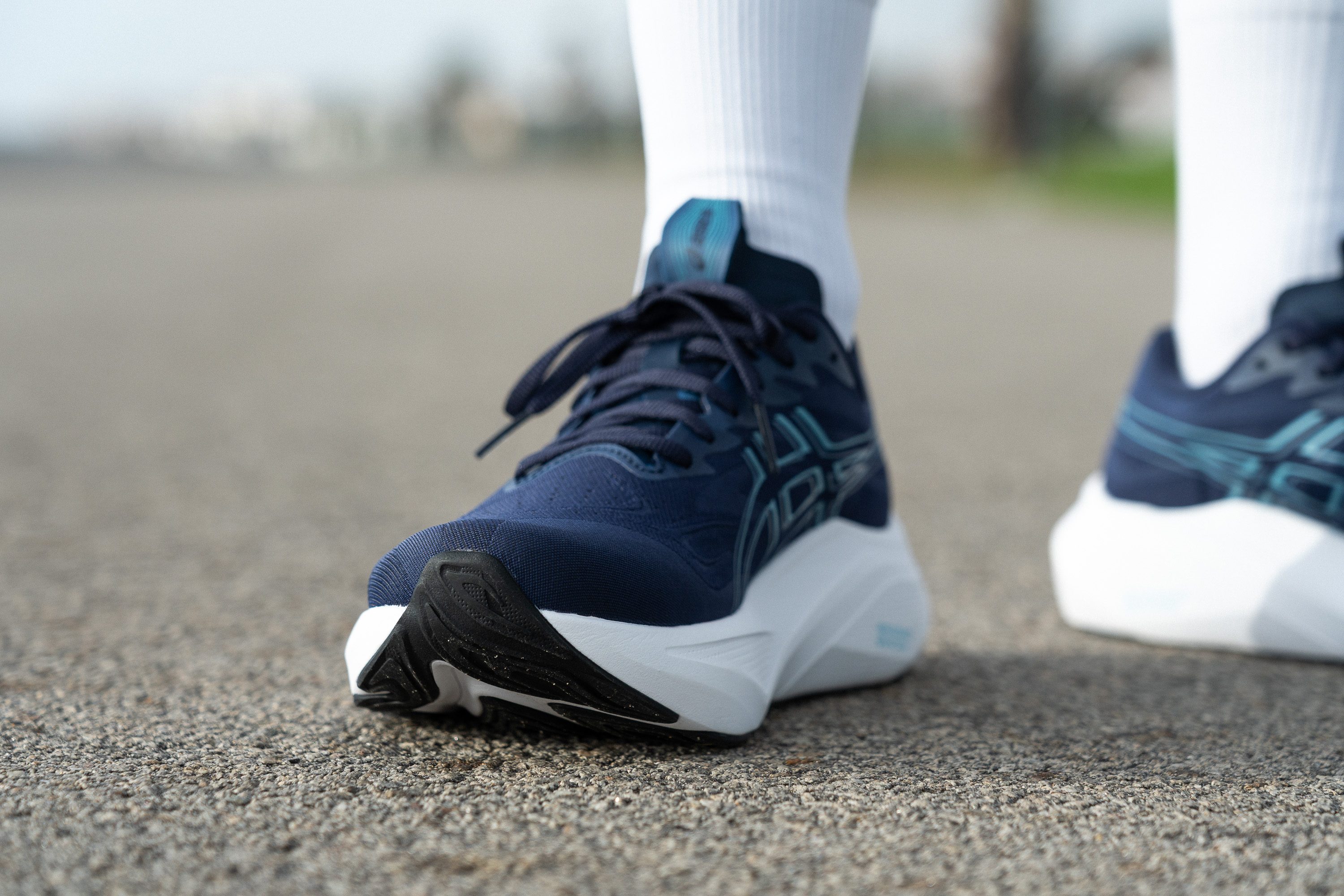
From our wear test results, it almost feels excessive. For runners focused on durability, this is perfect, but for others, a thinner layer could have made the ride more lively and shaved off some weight.
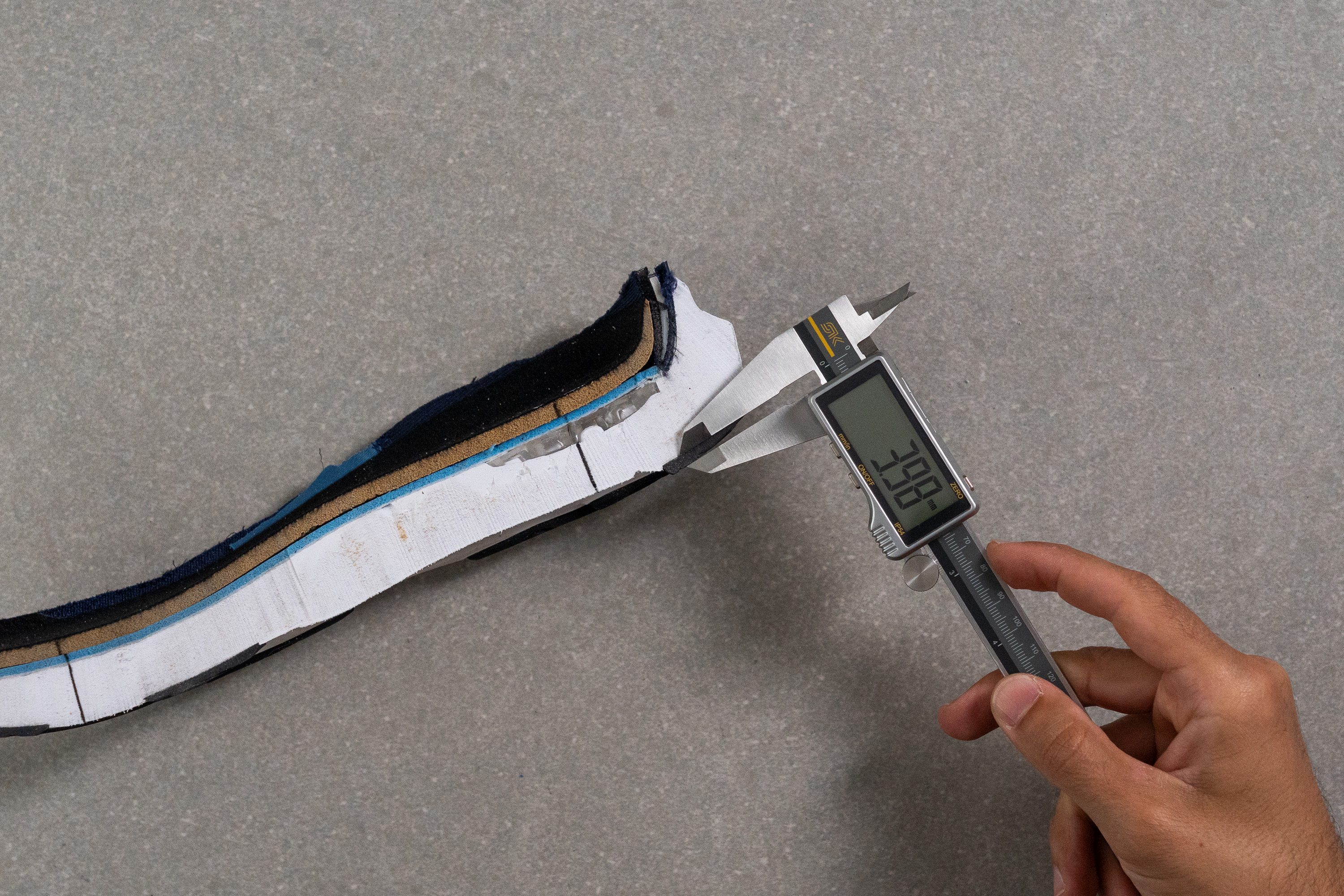
| GT 2000 14 | 4.0 mm |
| Average | 3.2 mm |
Misc
Insole thickness
The insole is a standard EVA piece with a straightforward design and a thickness of 4.7 mm.
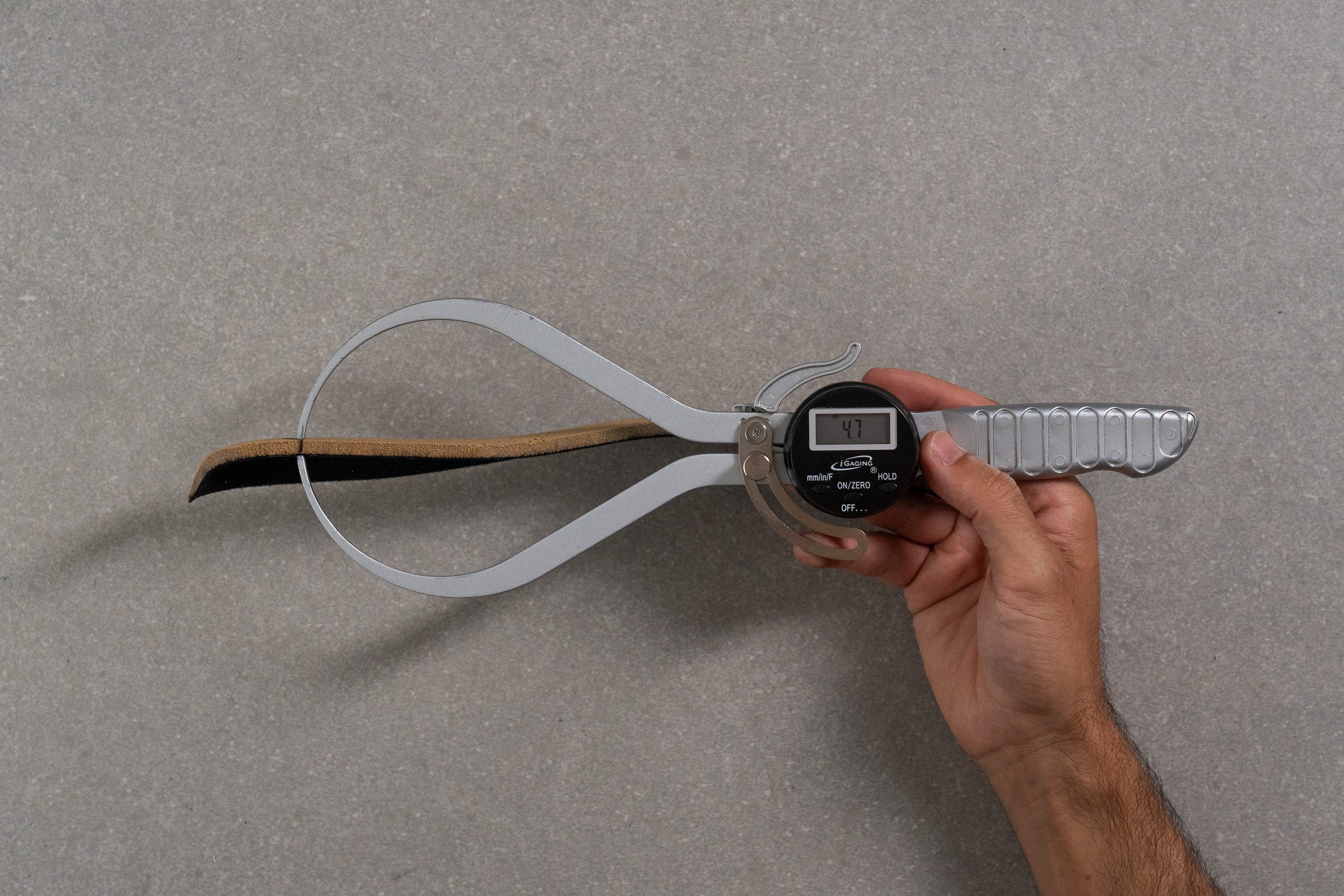
| GT 2000 14 | 4.7 mm |
| Average | 4.5 mm |
Removable insole
You can remove it easily since it’s not glued to the last, and with its shape, most aftermarket options will fit without any problem.
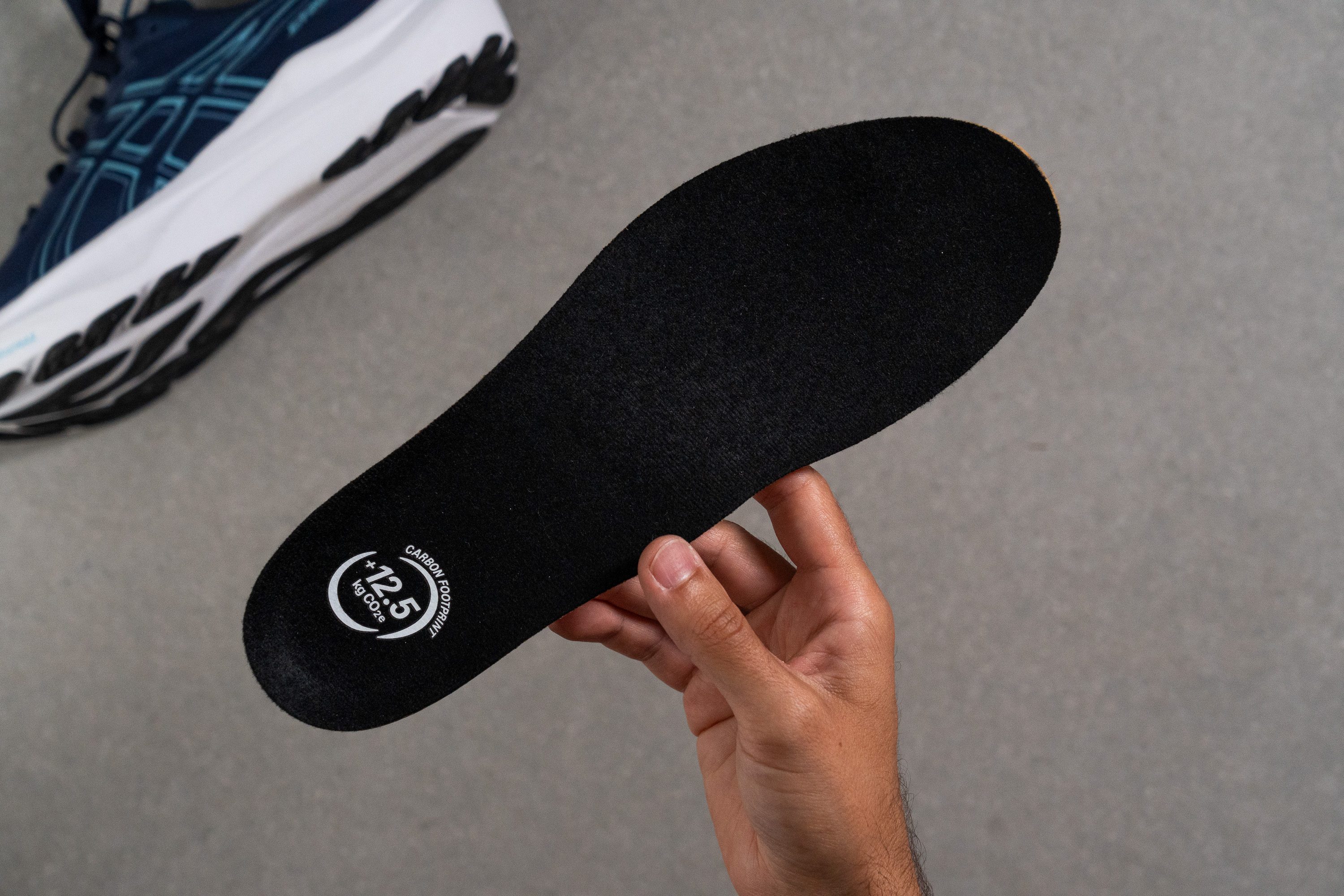
| GT 2000 14 | Yes |
Midsole softness in cold (%)
The FF Blast Max foam turned noticeably firmer in colder conditions. After placing it in our freezer for 20 minutes, we measured 24.0 HA on the durometer, representing a 38% increase compared to room temperature.
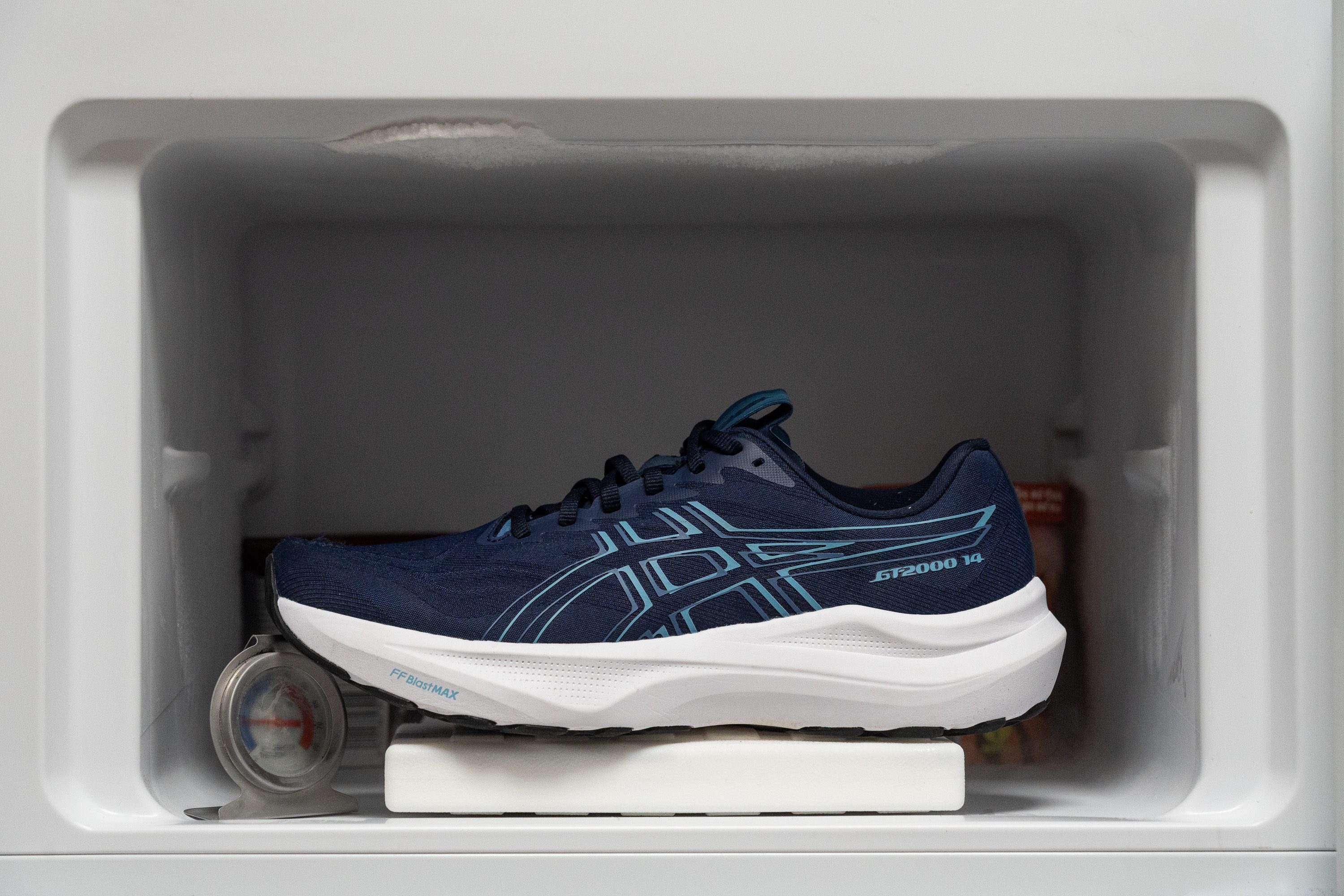
| GT 2000 14 | 38% |
| Average | 24% |
Reflective elements
One detail we wish were different is the lack of reflective elements. Many runners may not mind, but having some is always a plus for visibility, and it certainly doesn’t cause any downside.
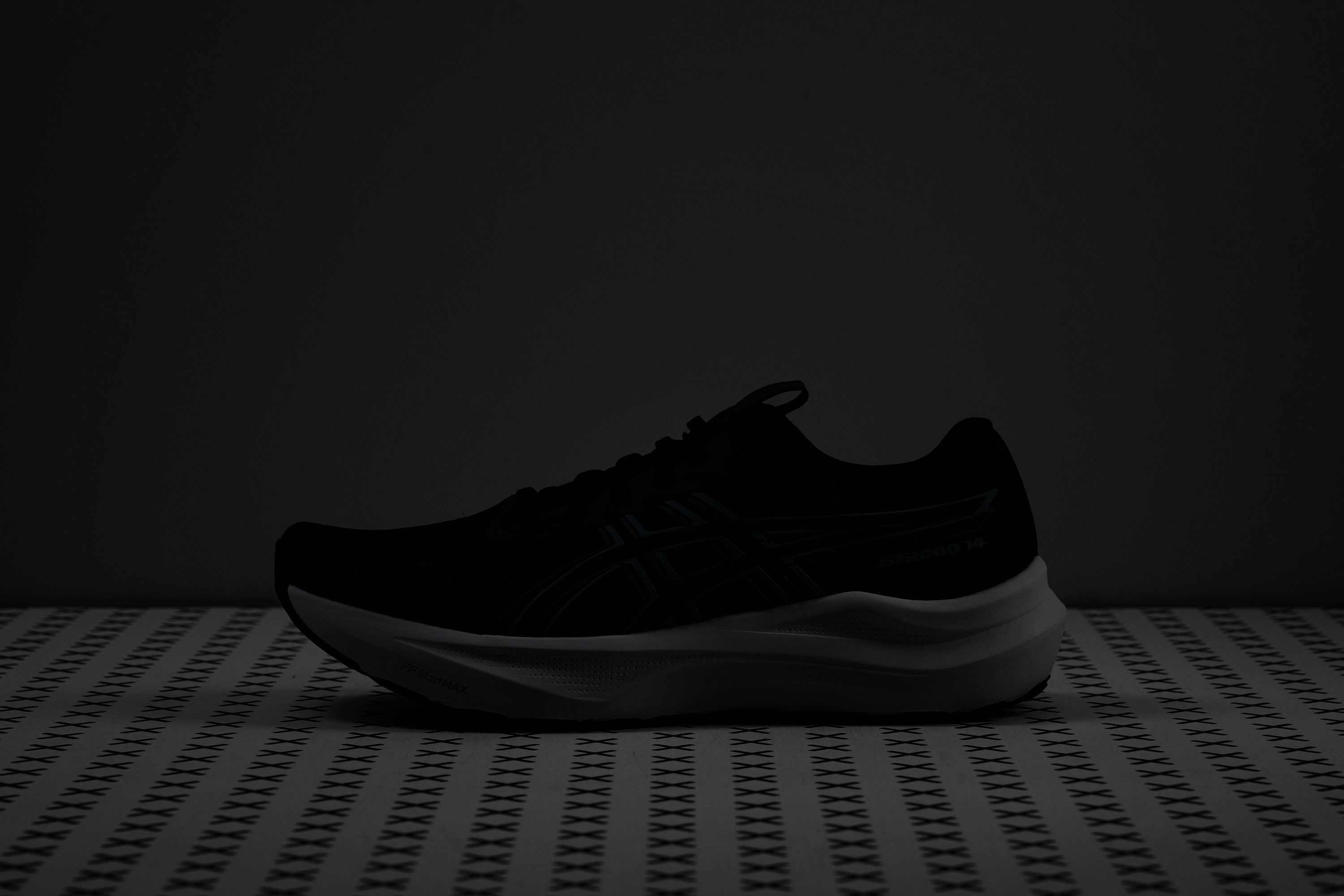
| GT 2000 14 | No |
Tongue padding
The GT 2000 14 uses a straightforward lacing system with six eyelets on each side plus an optional runner’s loop at the top. All eyelets are punched directly into the engineered mesh, but are reinforced with overlays for added durability.
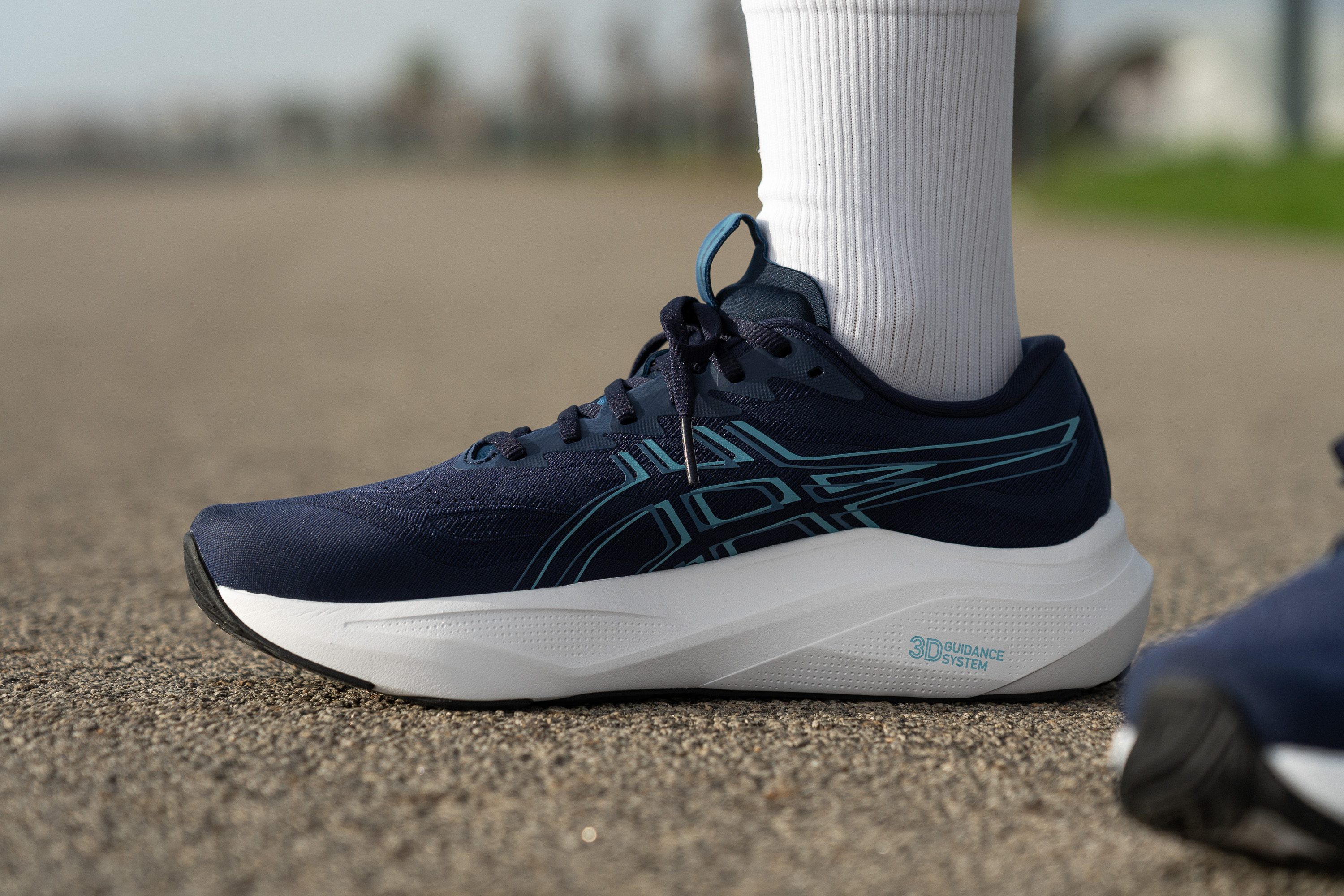
We measured the tongue and discovered a max thickness of 6.1 mm, striking a clever mix of light padding and reduced weight. ASICS placed foam only where pressure is highest, creating a targeted design that feels more thoughtful than tongues found in most other running shoes.
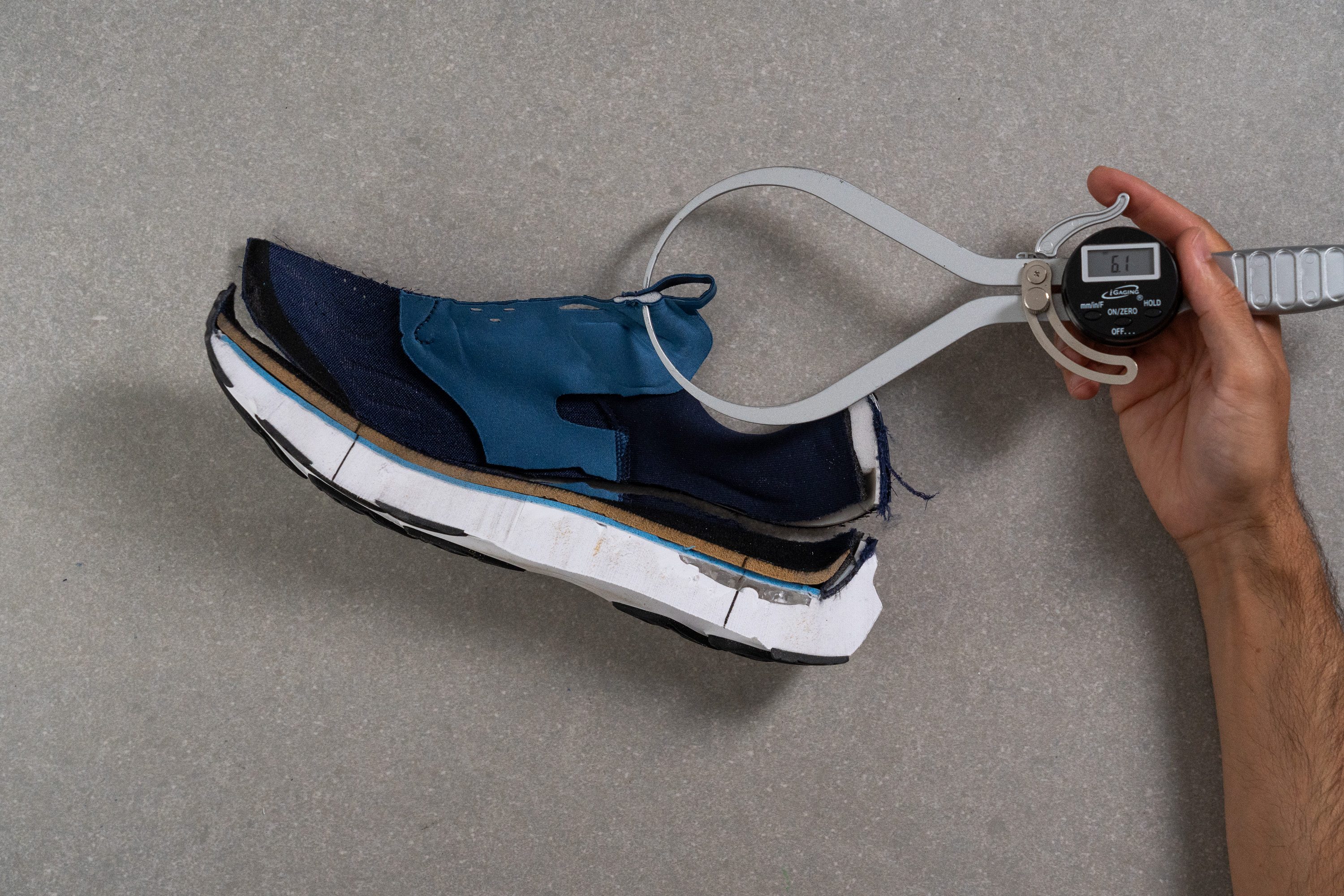
| GT 2000 14 | 6.1 mm |
| Average | 5.8 mm |
Tongue: gusset type
The tongue of the GT 2000 14 features a semi-gusseted design, which is a great detail at this price point. It enhances lockdown and proves especially valuable given the tongue’s thin build, which could otherwise be more prone to shifting.
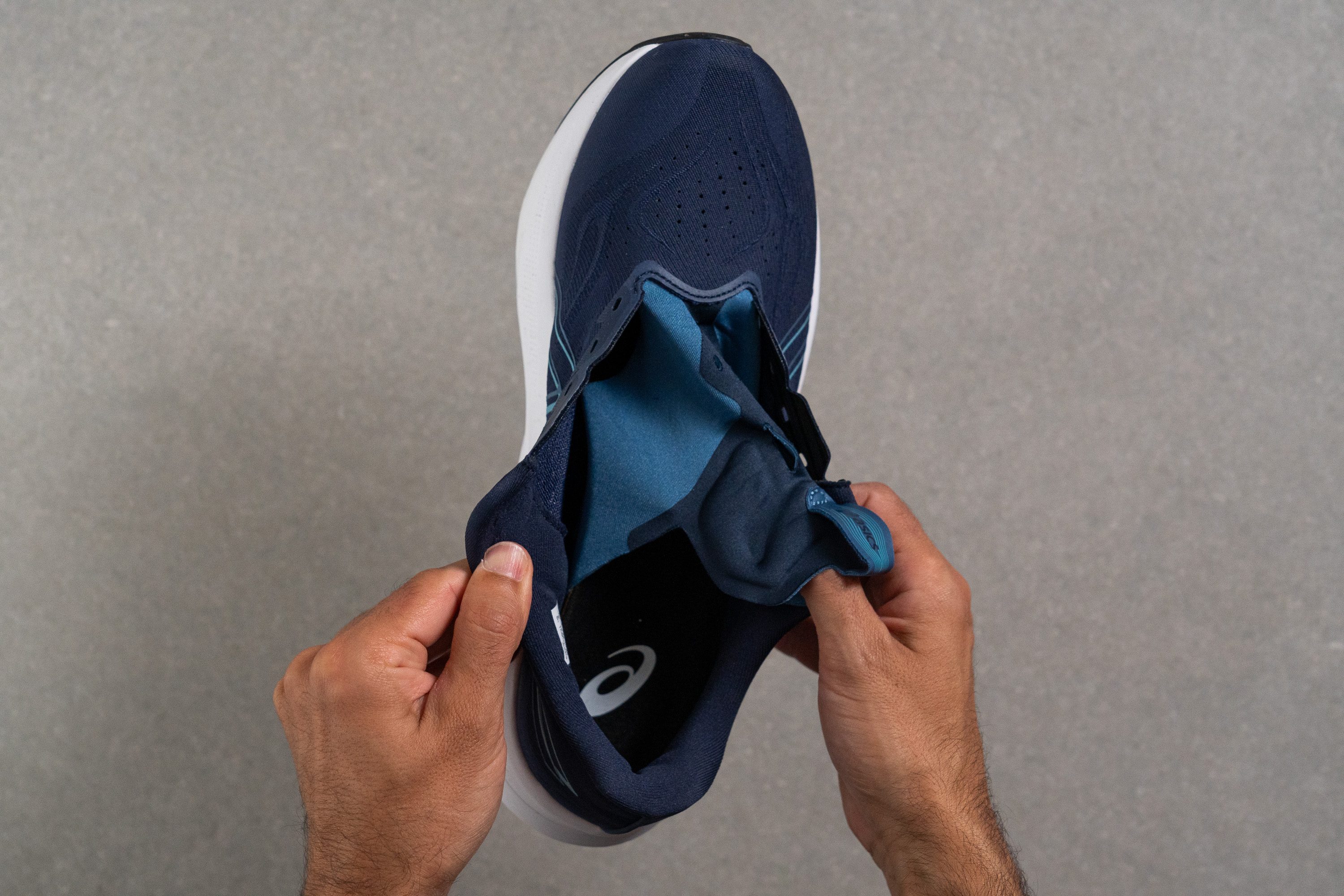
| GT 2000 14 | Both sides (semi) |
Price
Good news for everyone: ASICS kept the same price as previous versions despite the foam upgrade to FF Blast Max. That’s rare these days, as many brands use major updates to justify a price hike, like Saucony recently did with the Triumph 23.
| GT 2000 14 | $140 |
Heel tab
The GT 2000 14’s heel features a clean, modern design with its stitching neatly hidden beneath an external overlay. However, the finger-loop heel tab from version 13 is gone, and we feel the older design was both more practical and visually appealing.
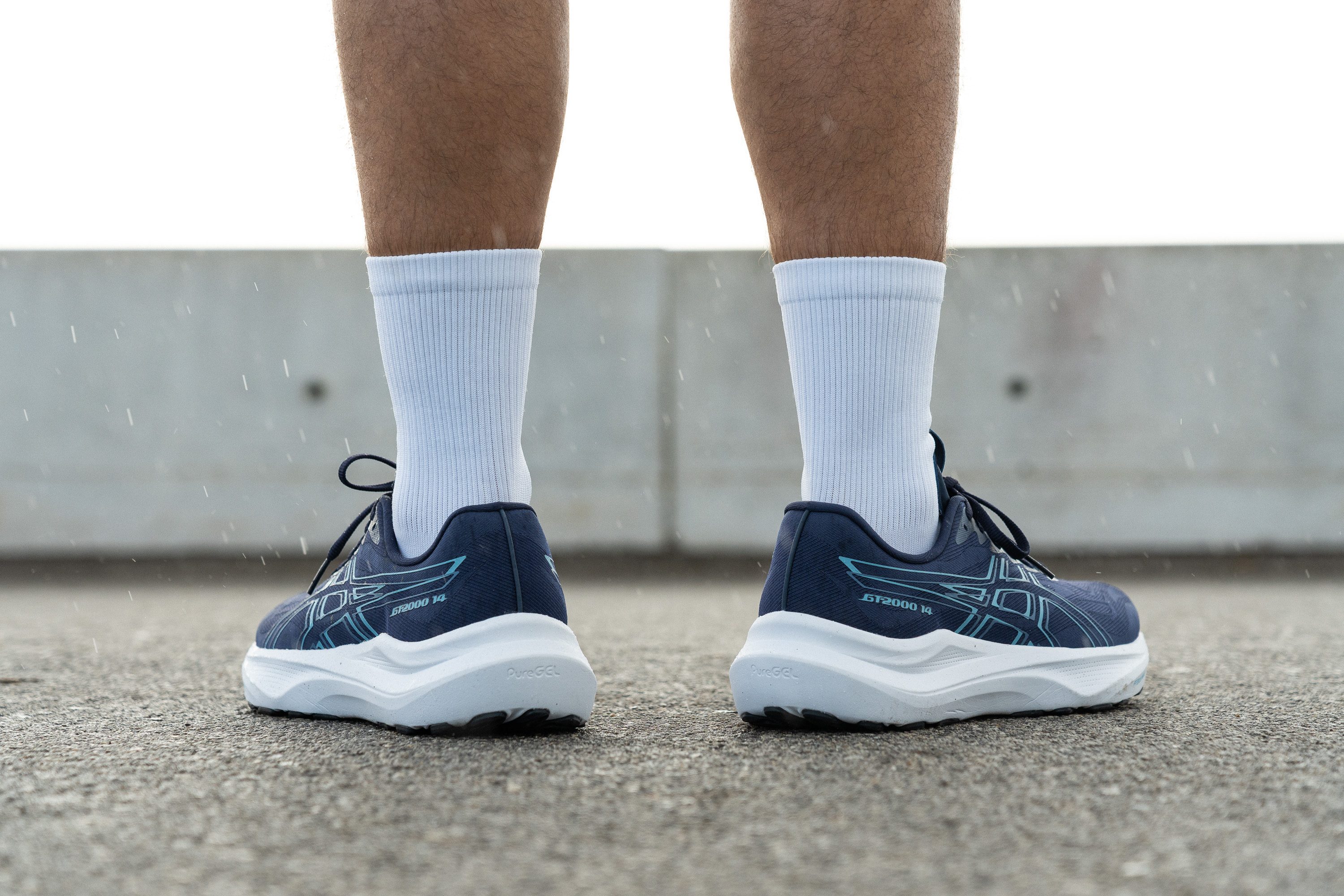
| GT 2000 14 | None |
Tongue tab
The GT 2000 14 features a fabric tongue tab with printed ASICS branding. It’s slightly elongated for easy grip, making it practical for quick adjustments and entry.
